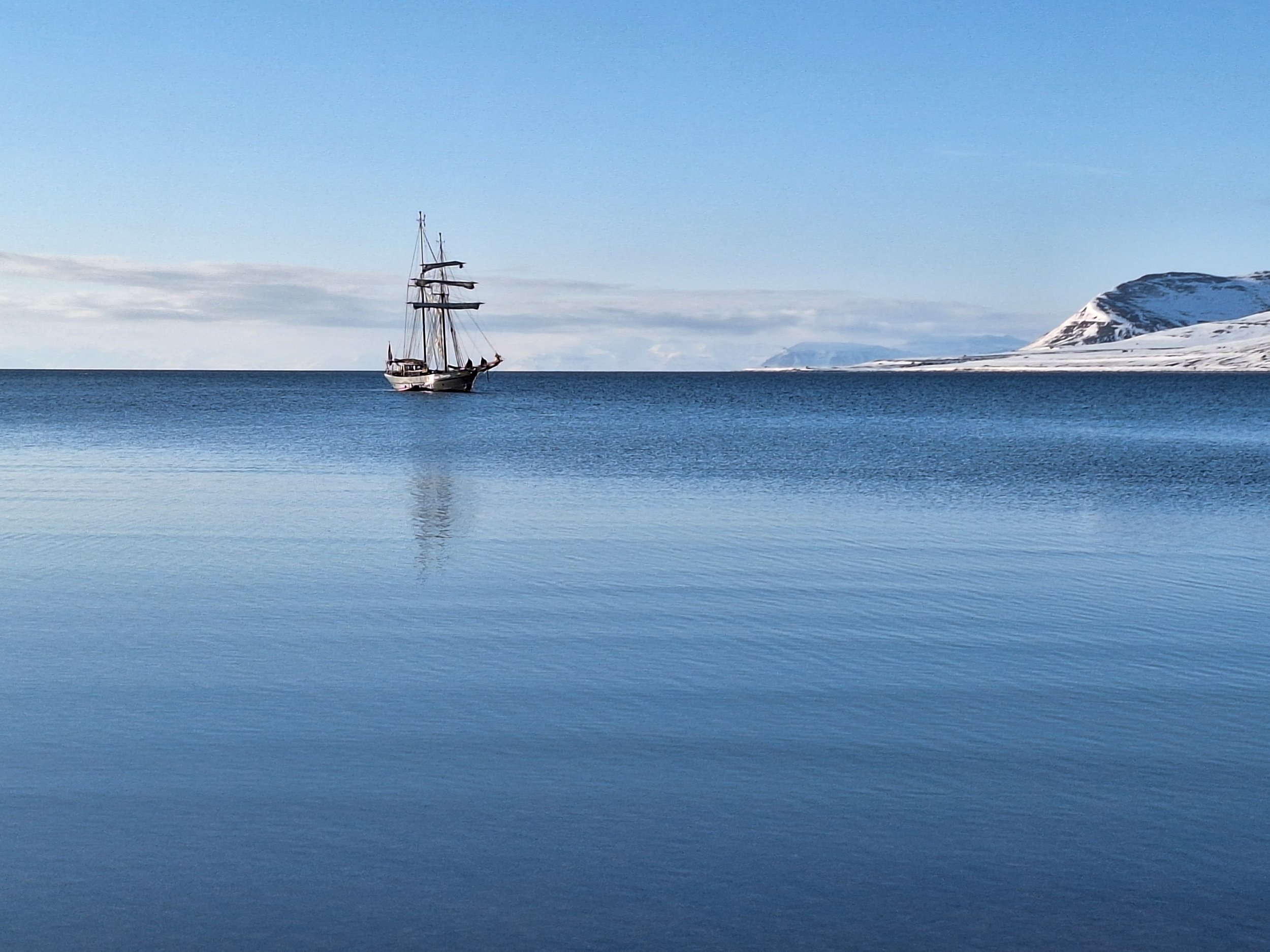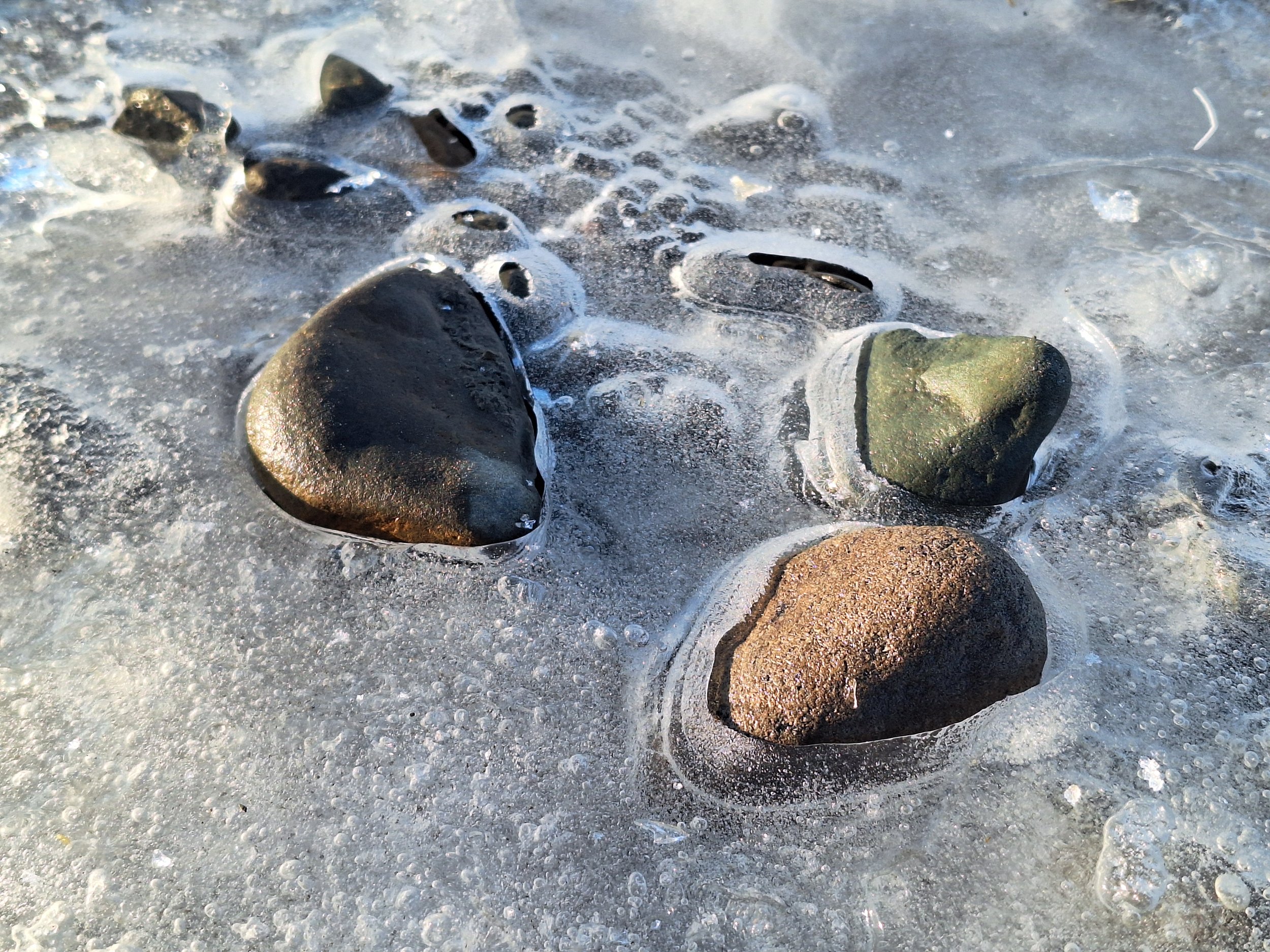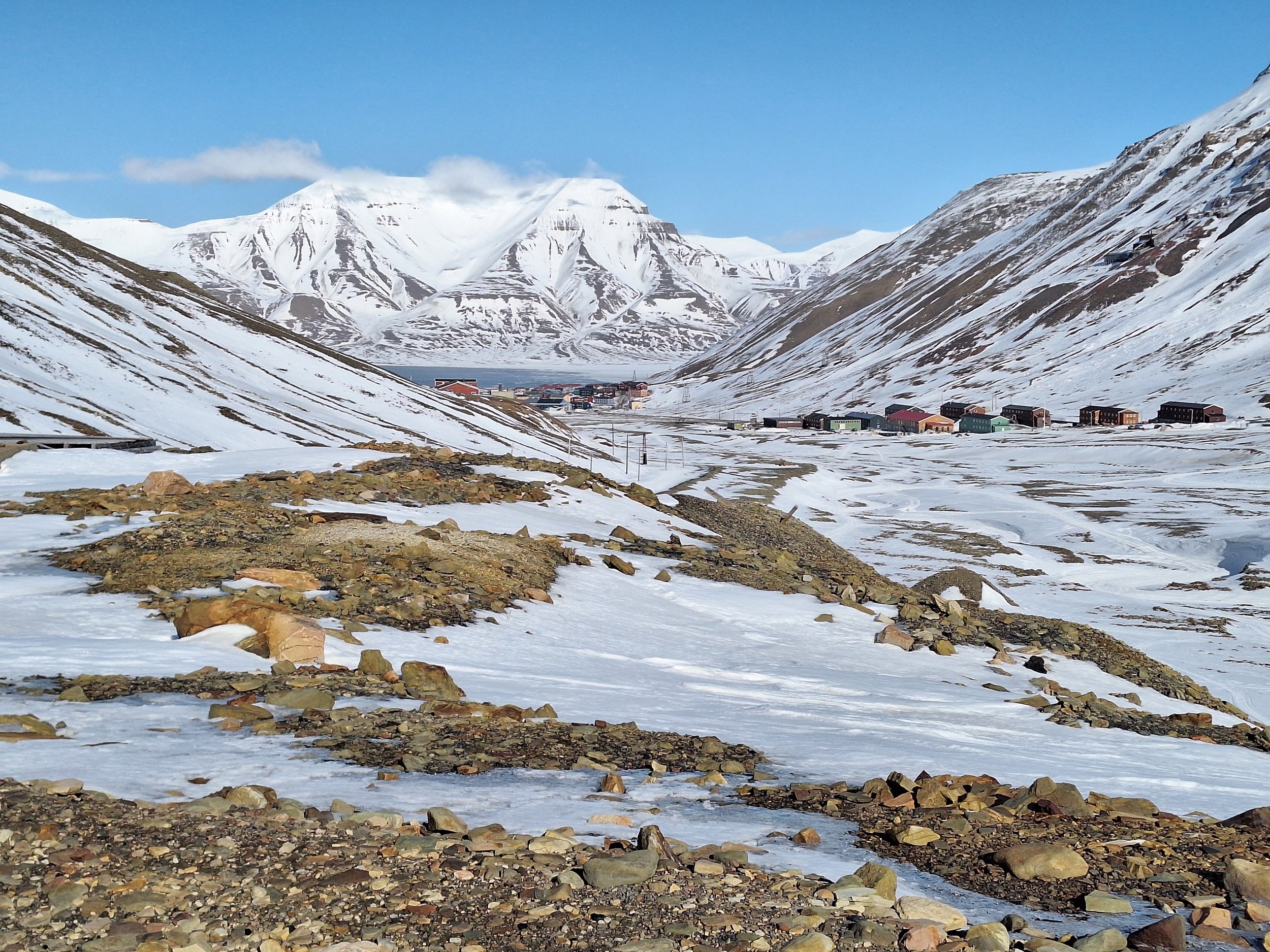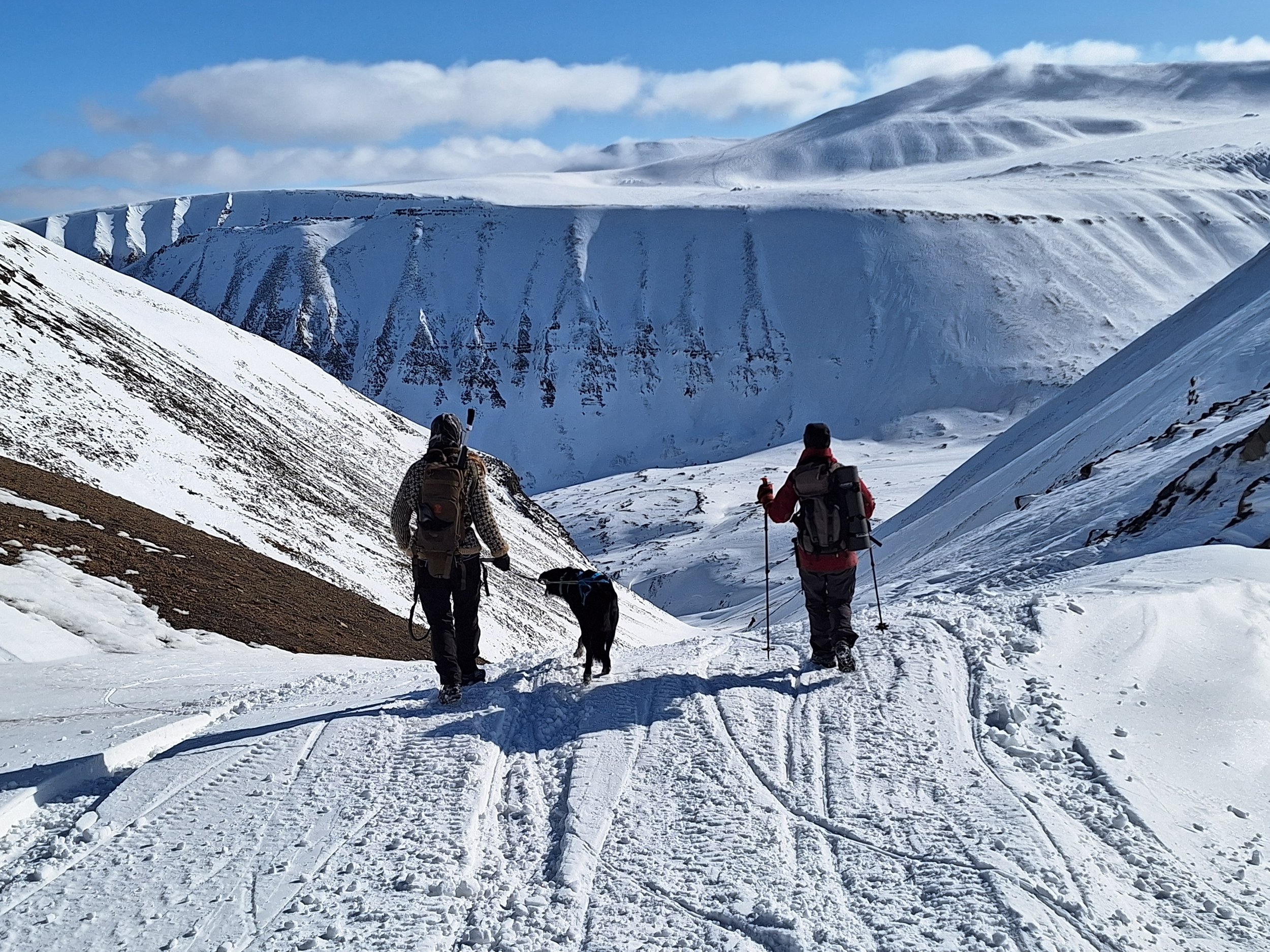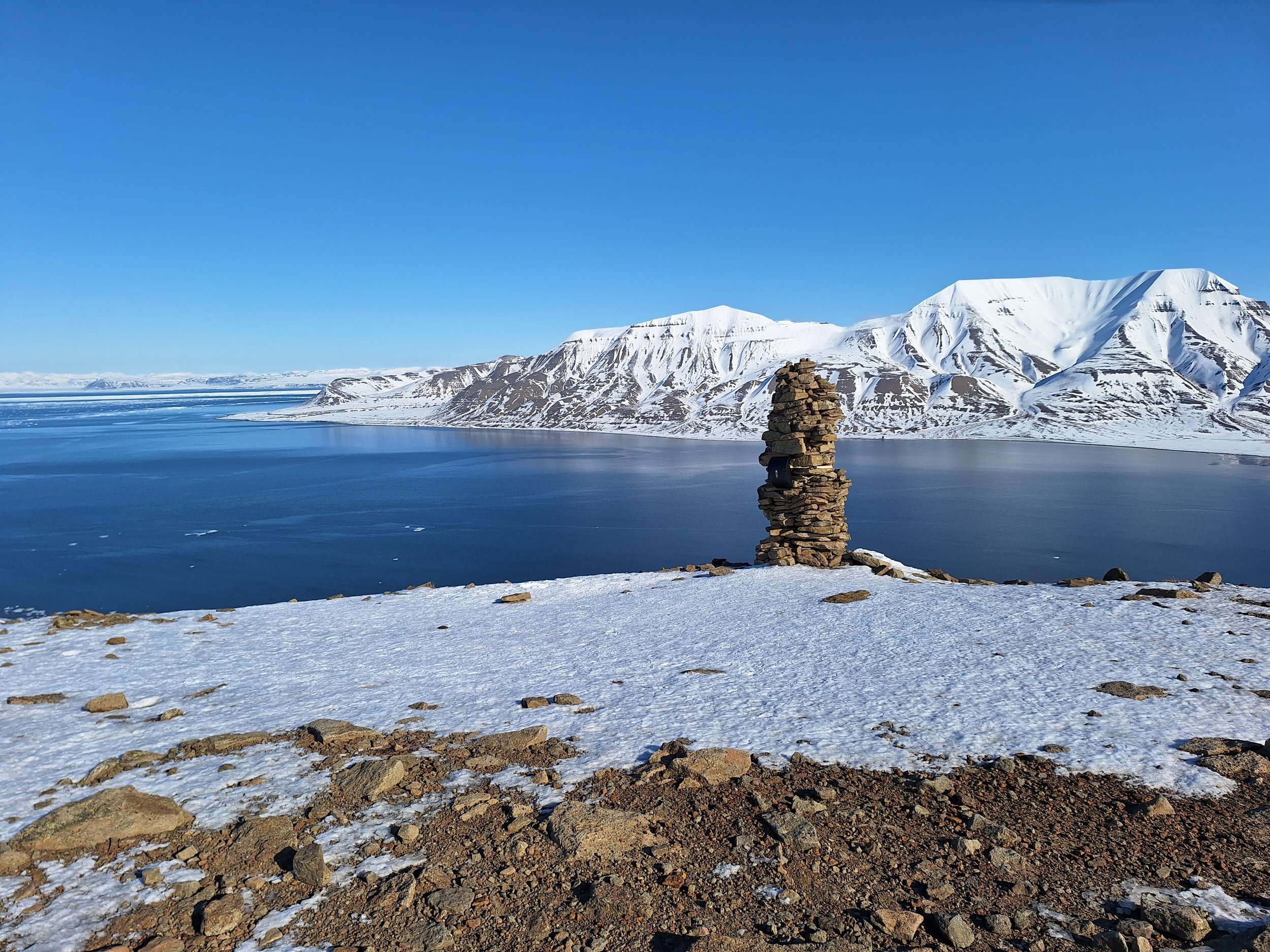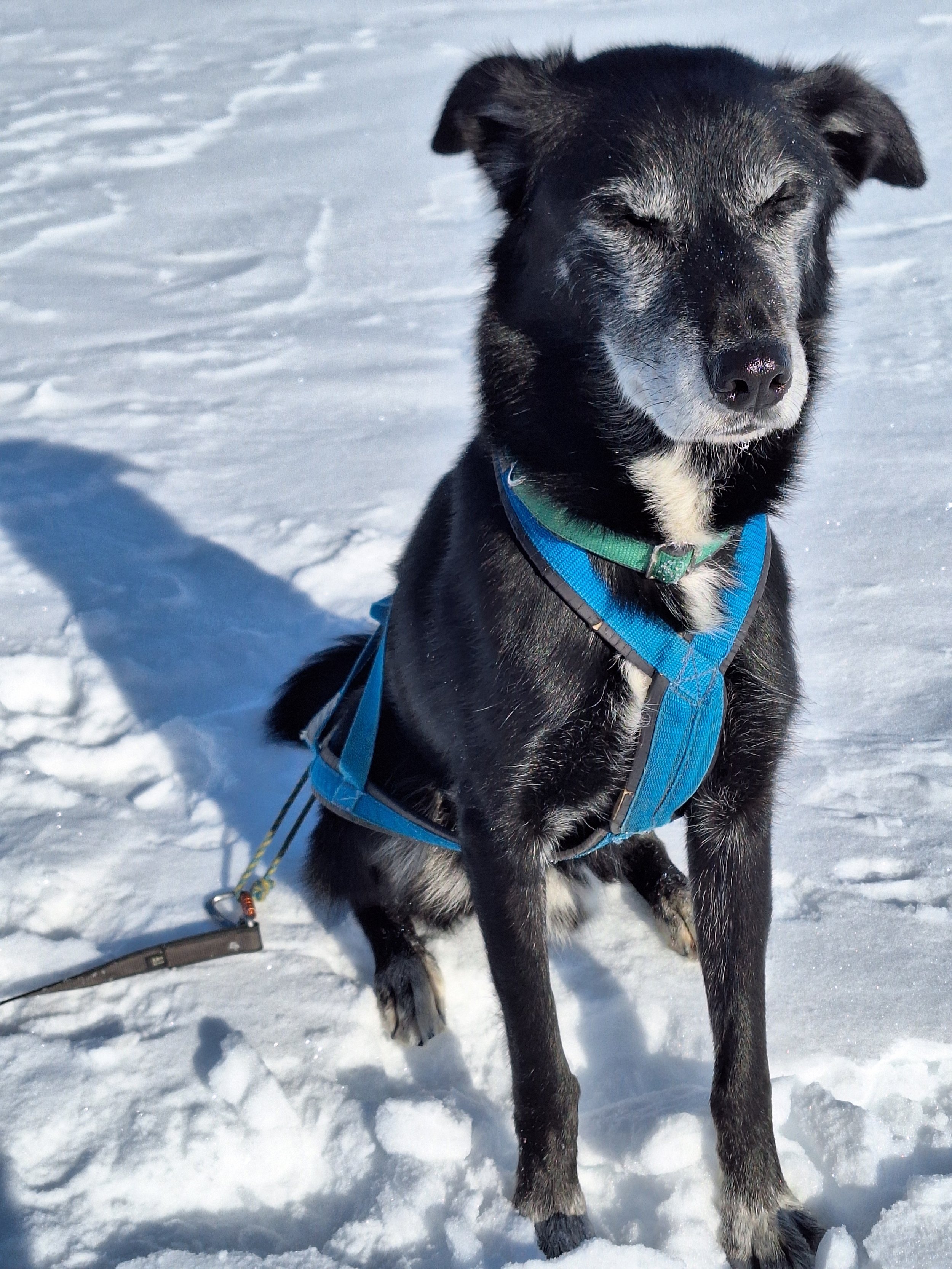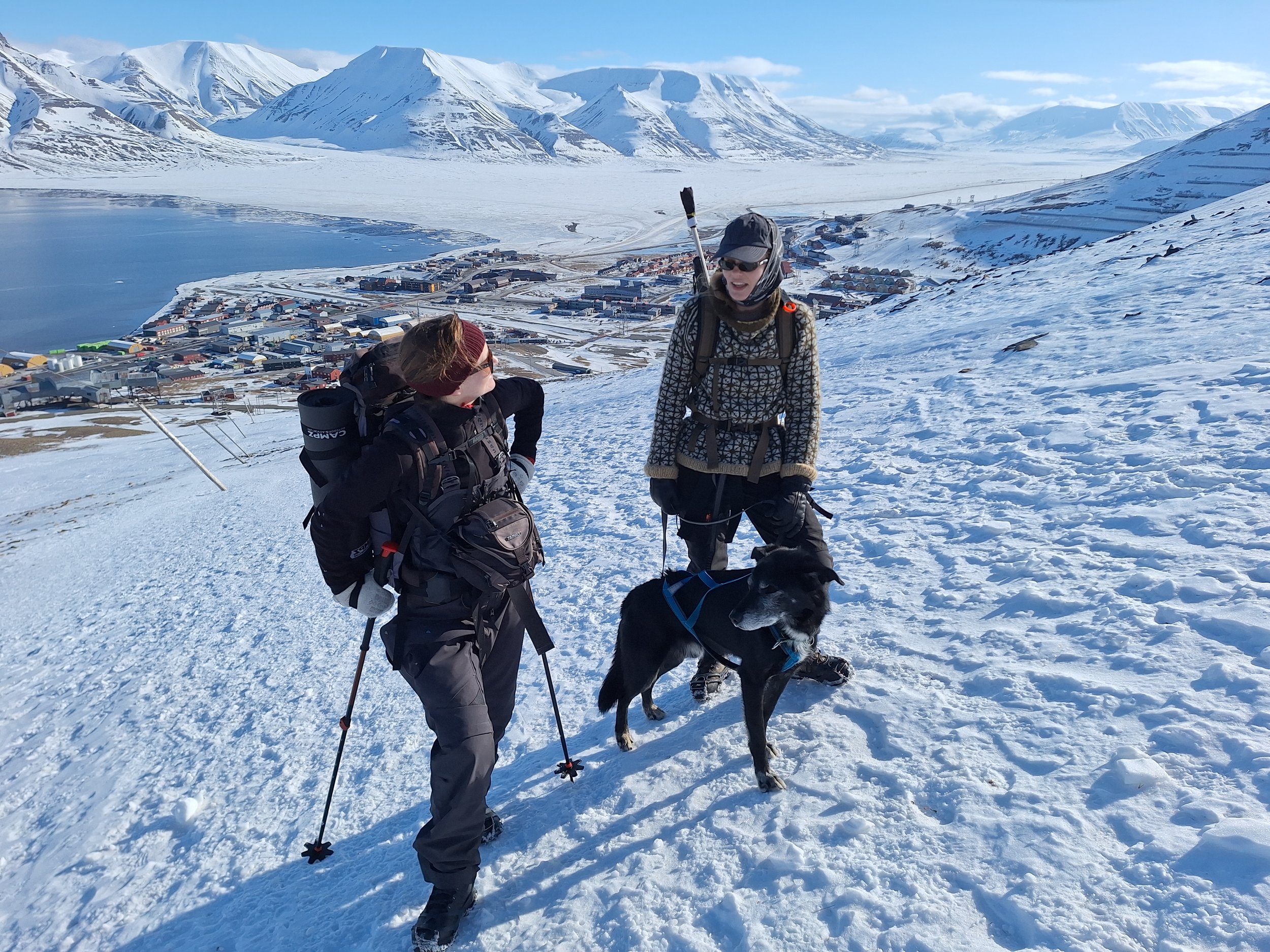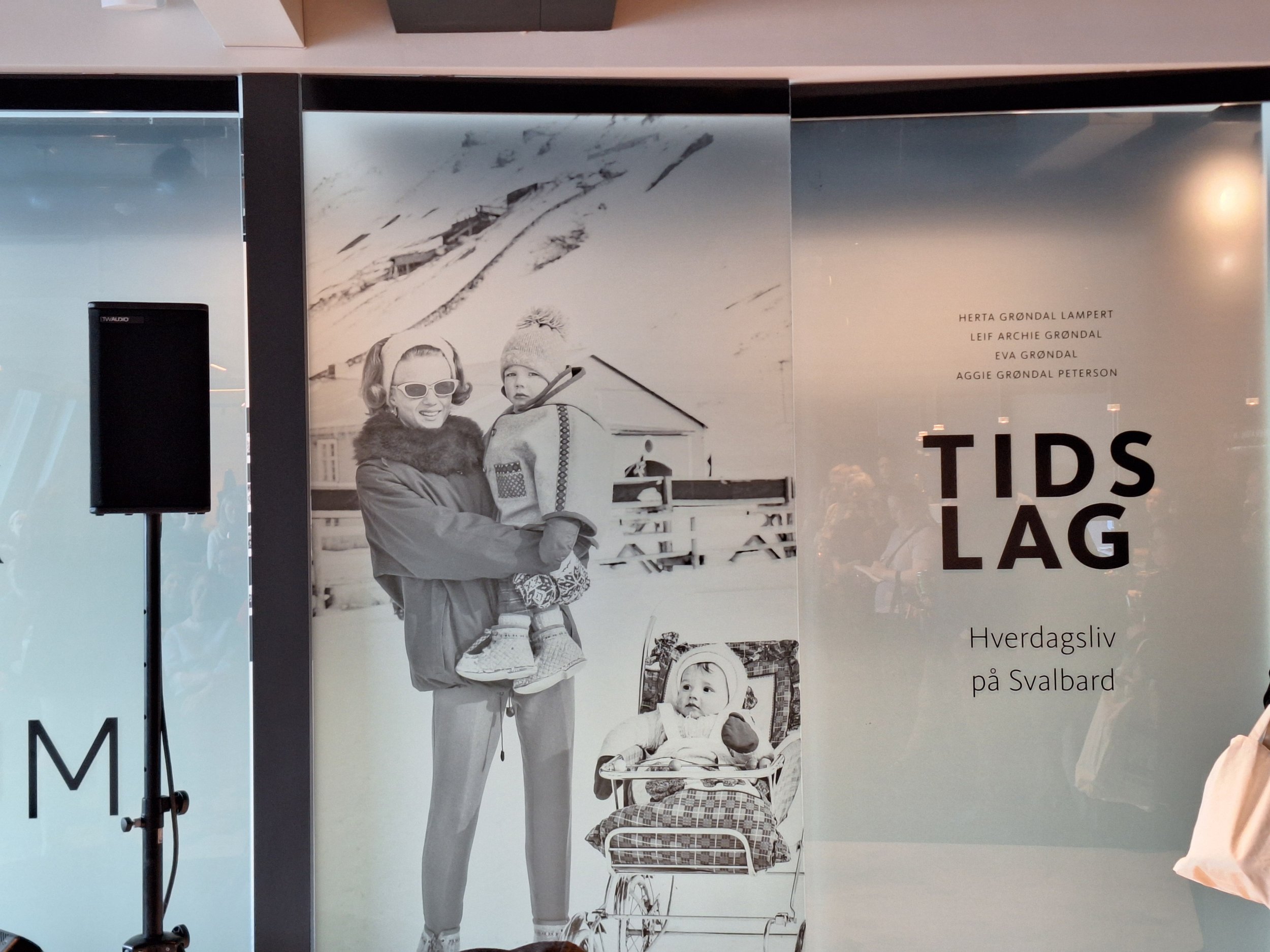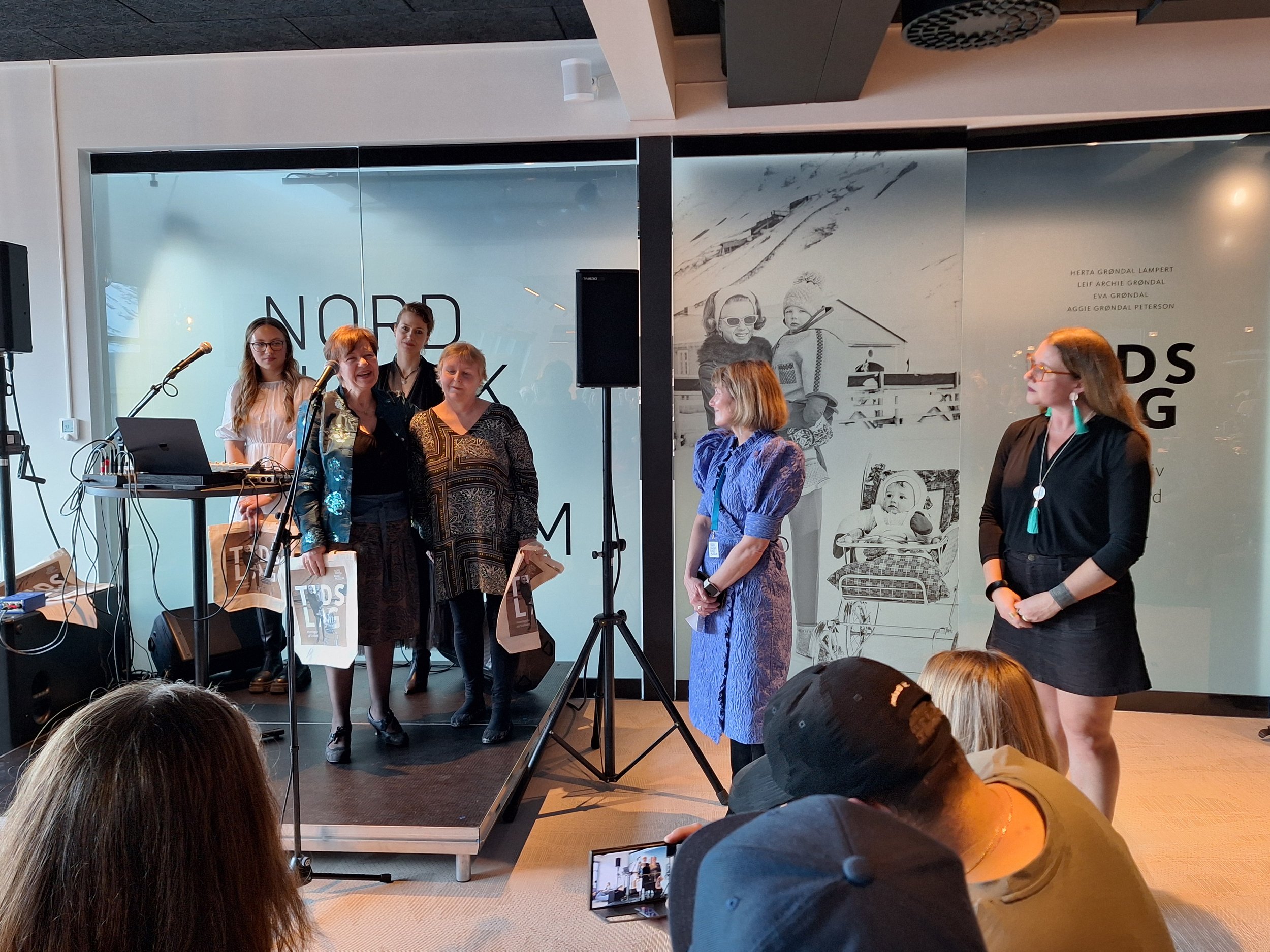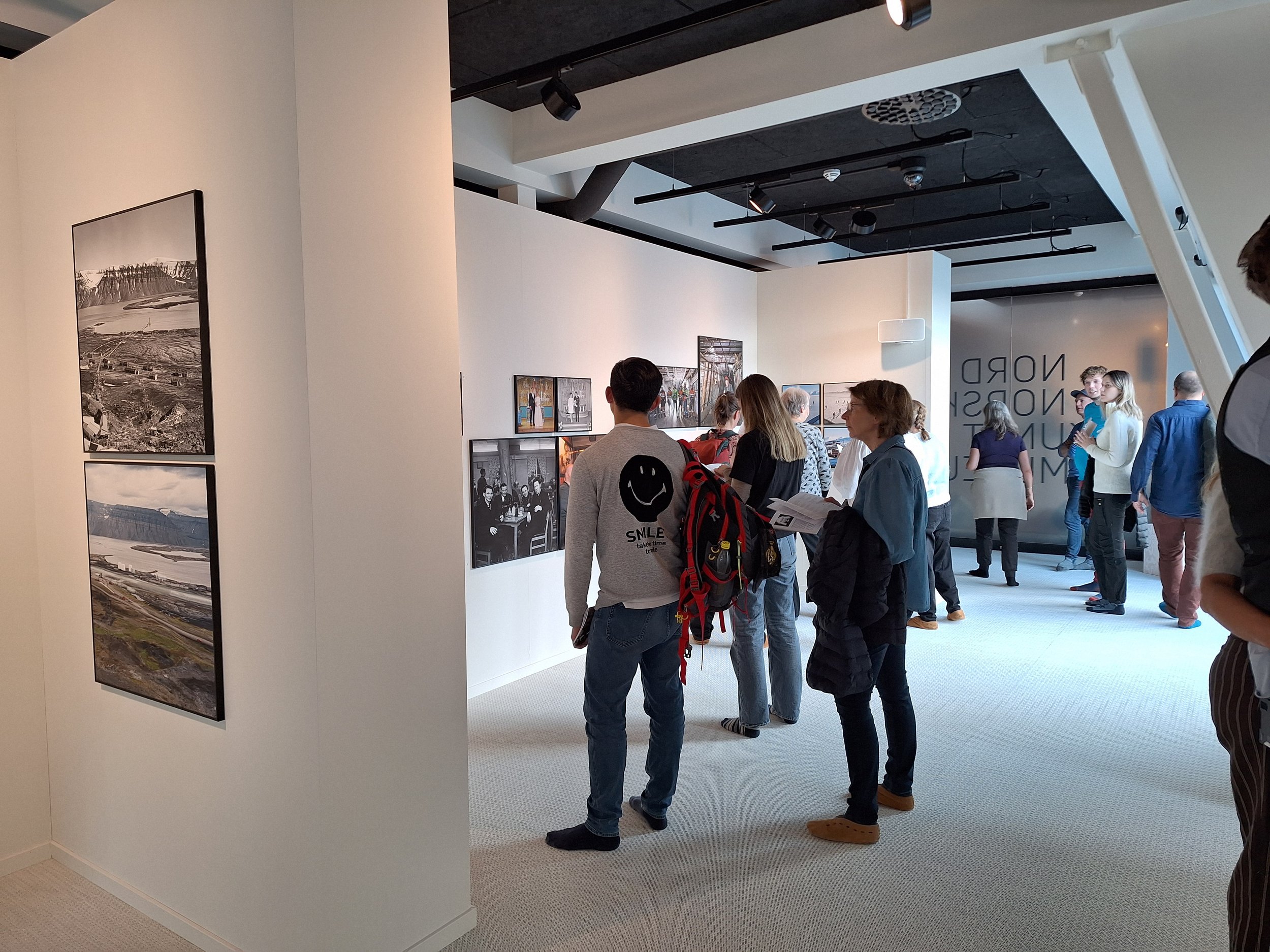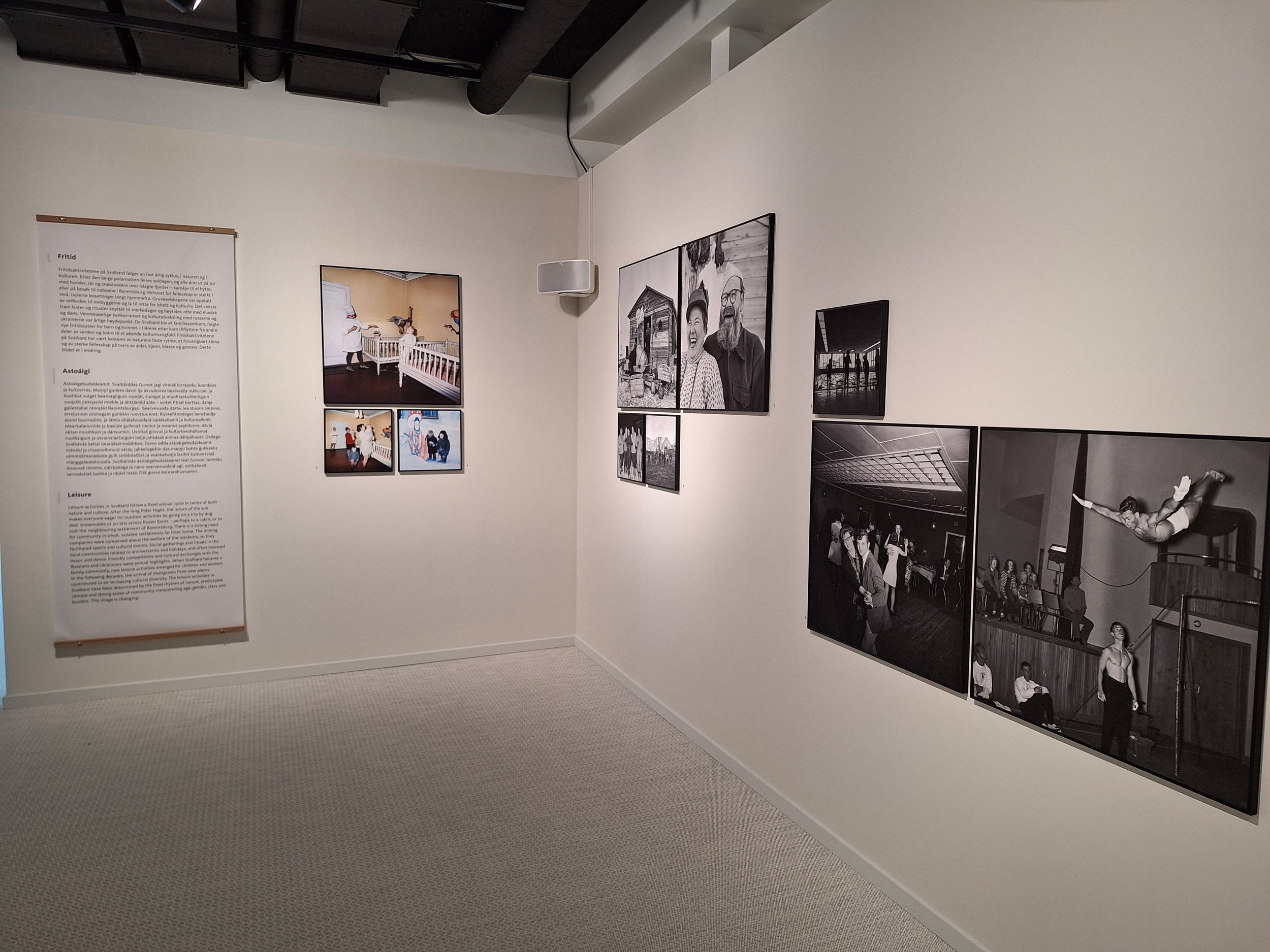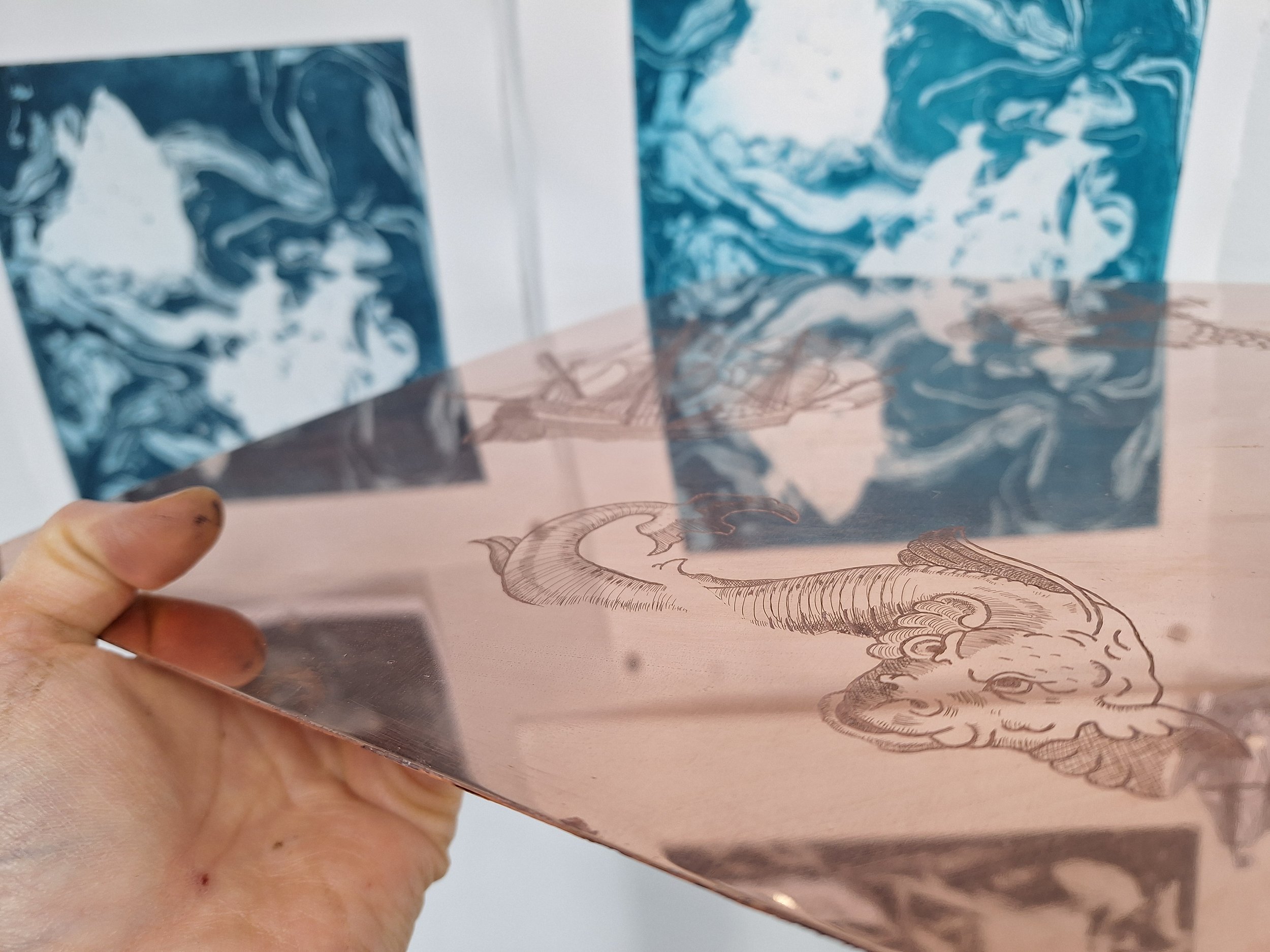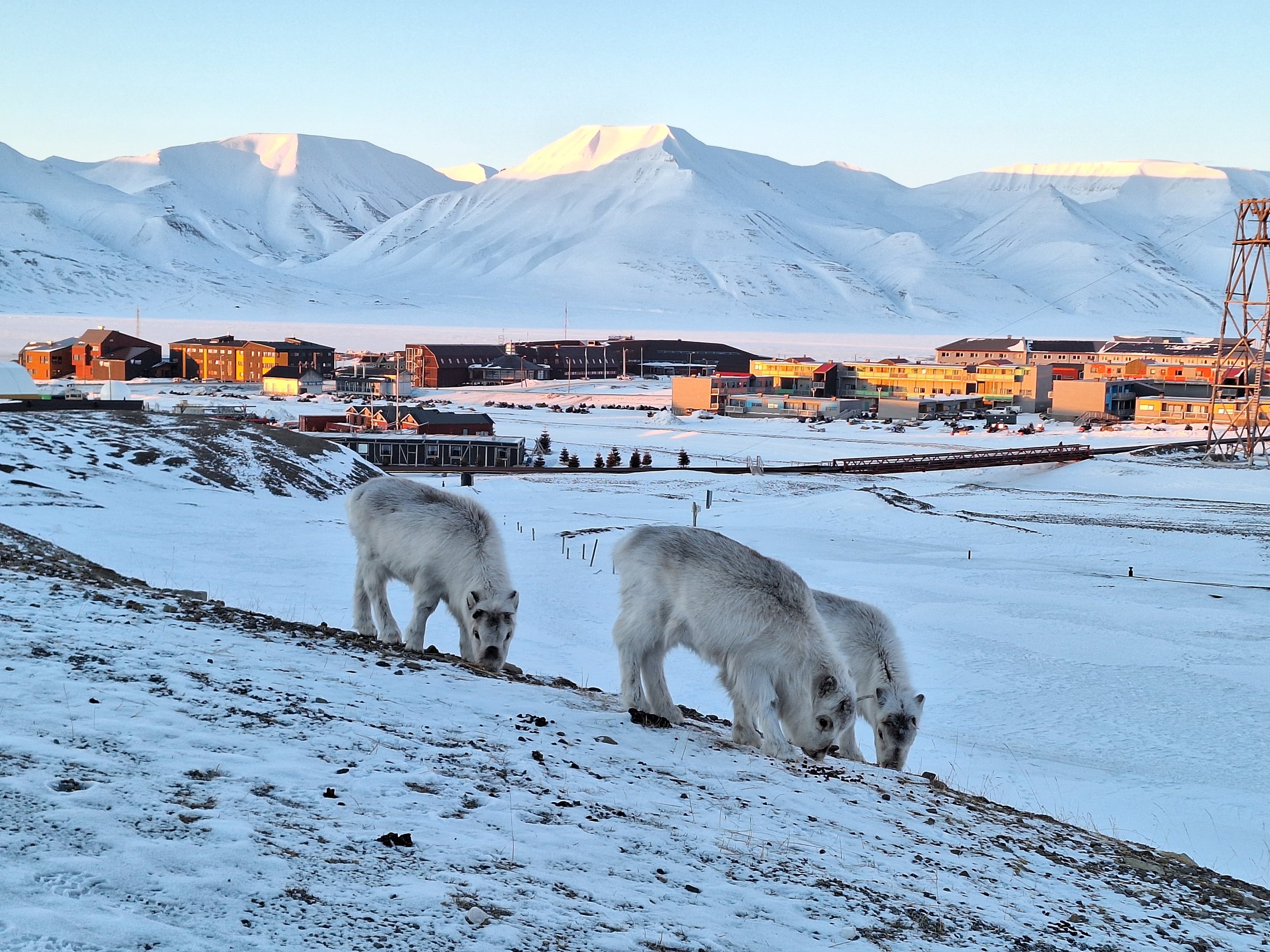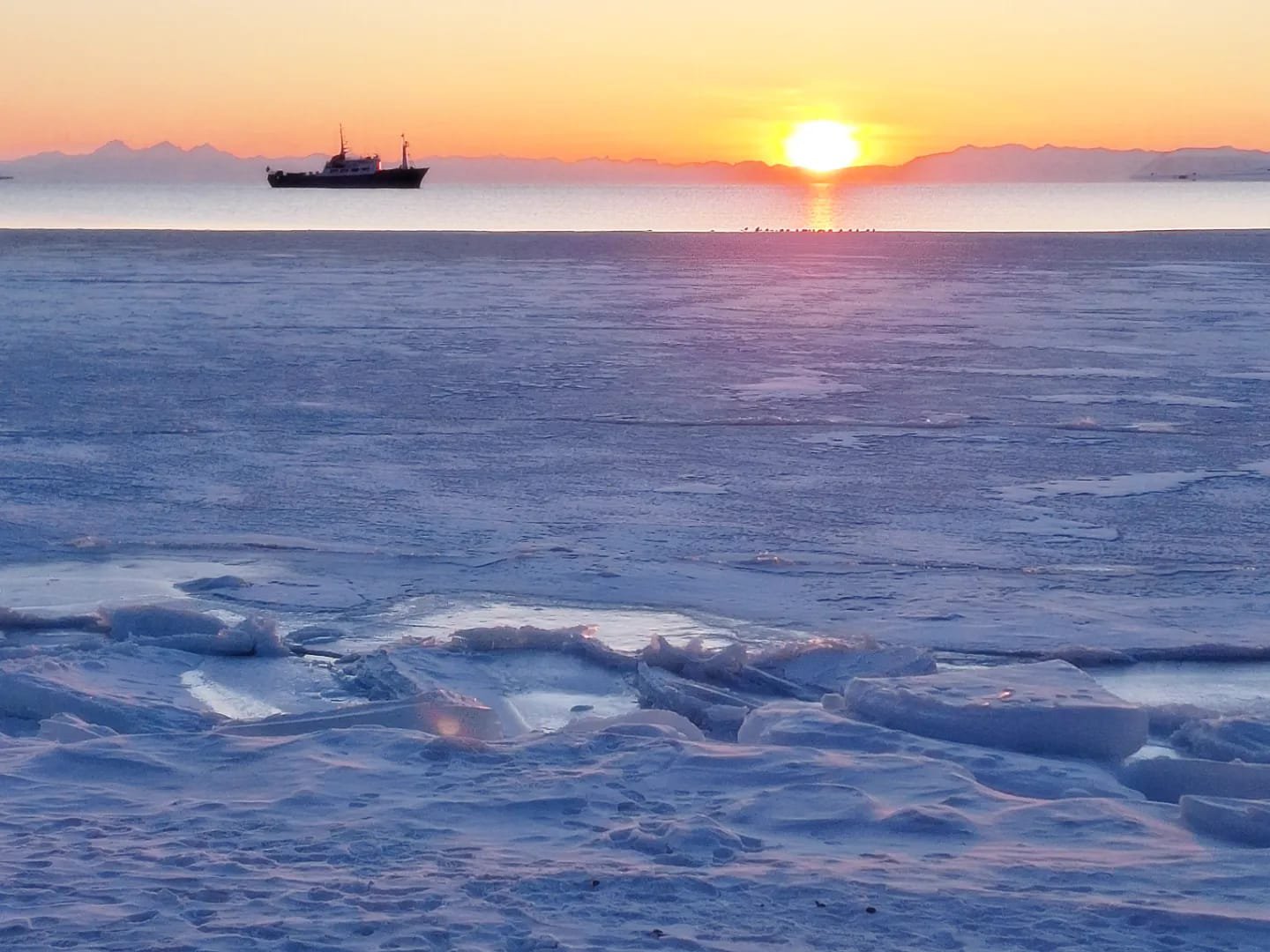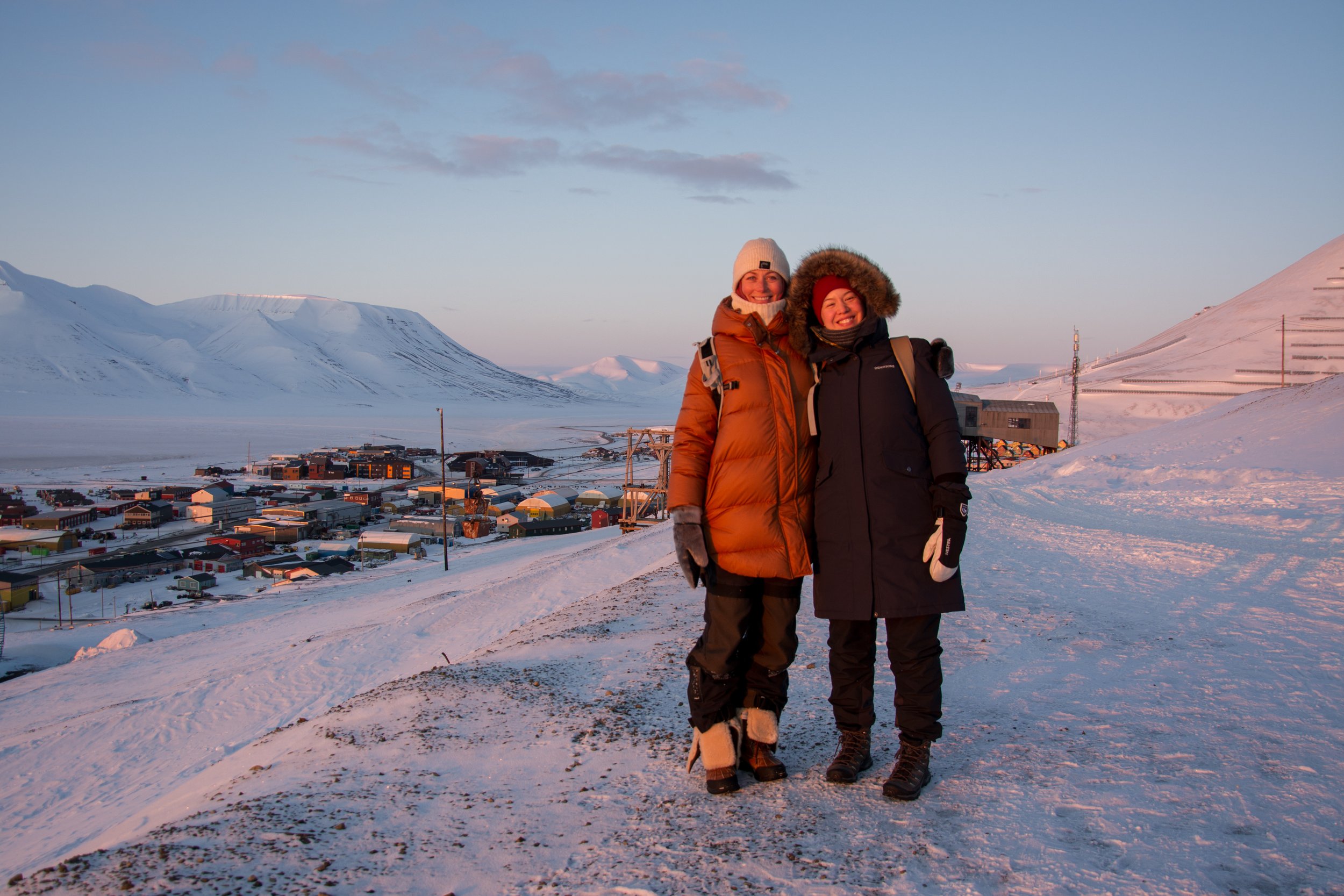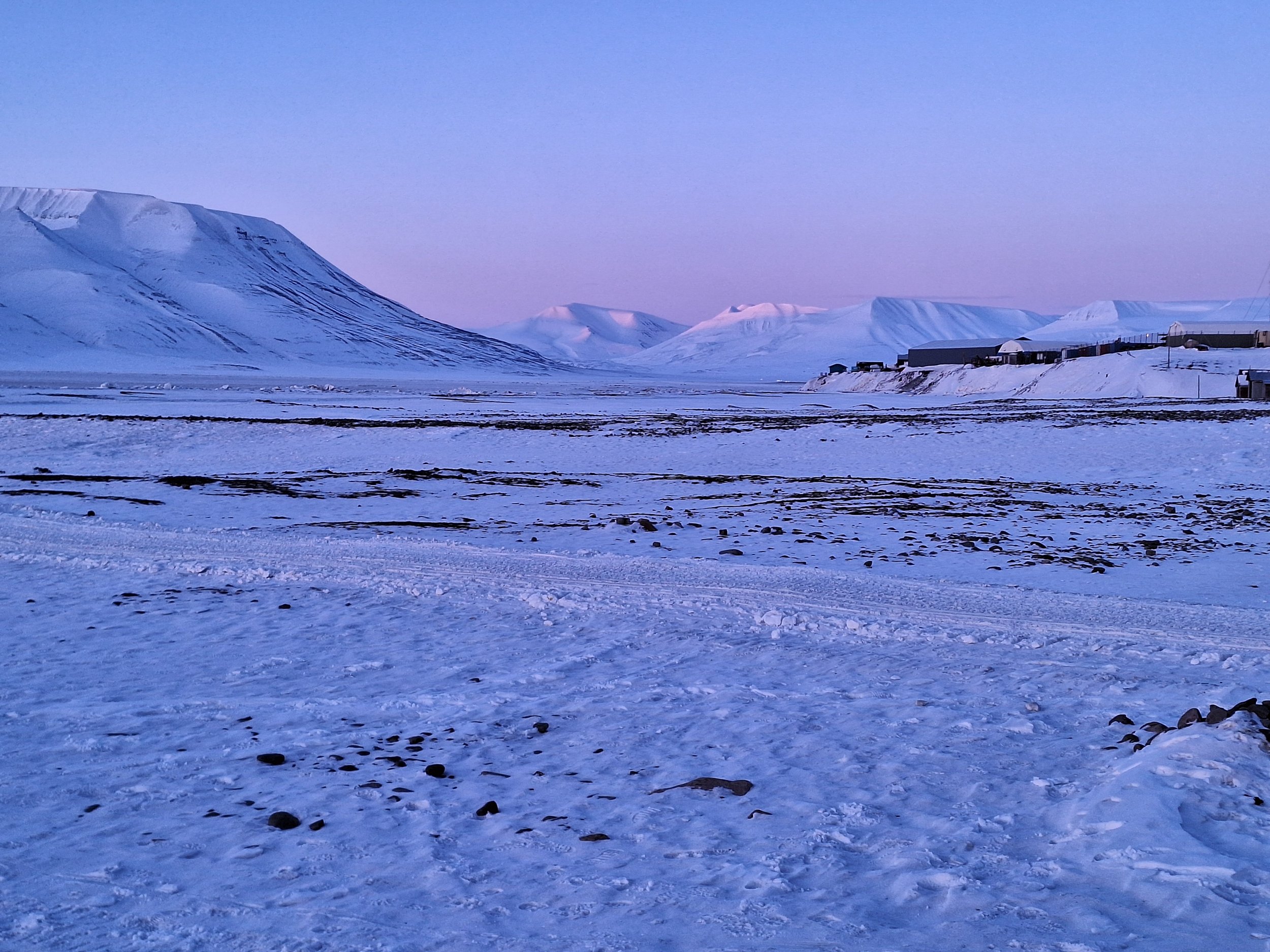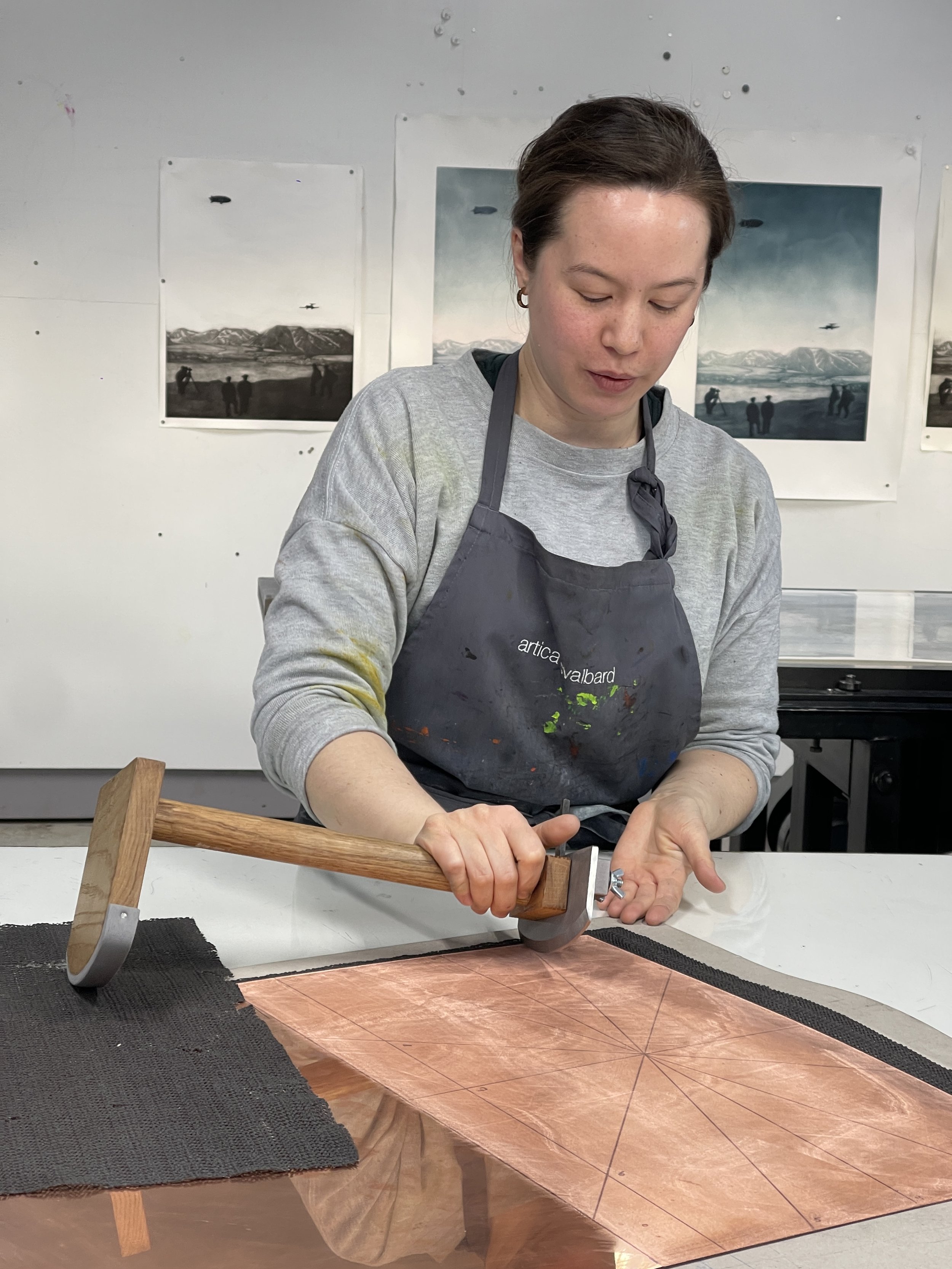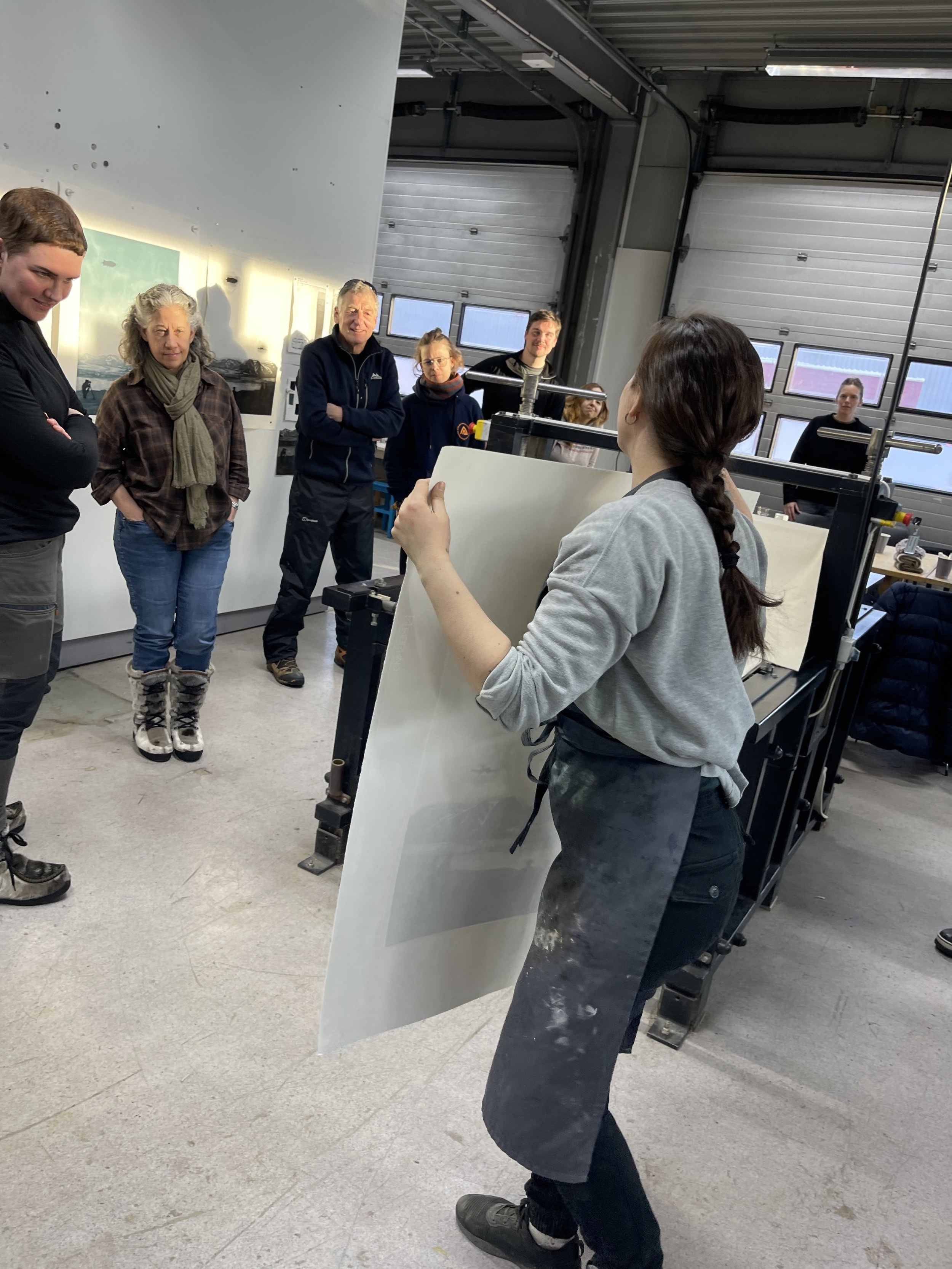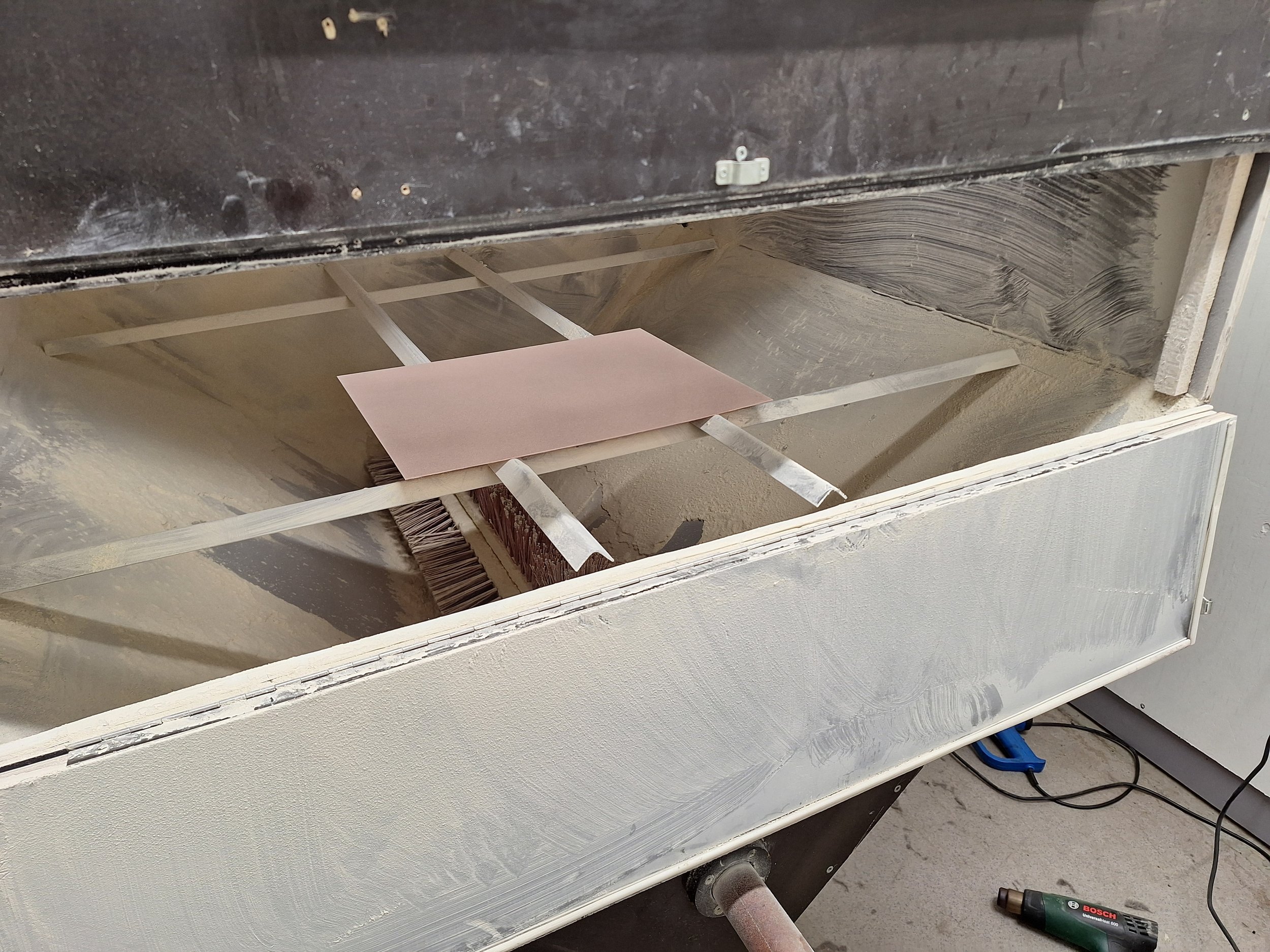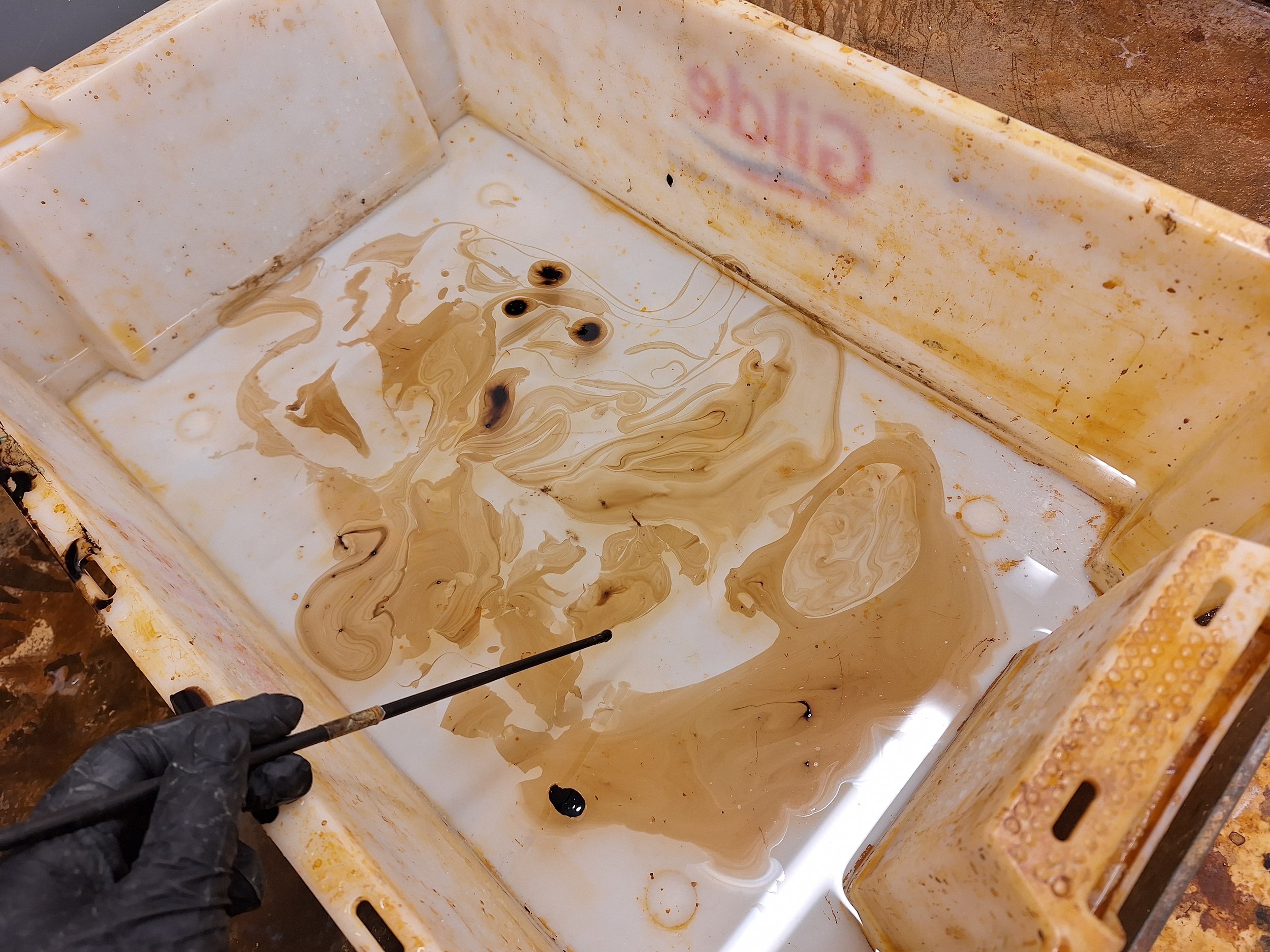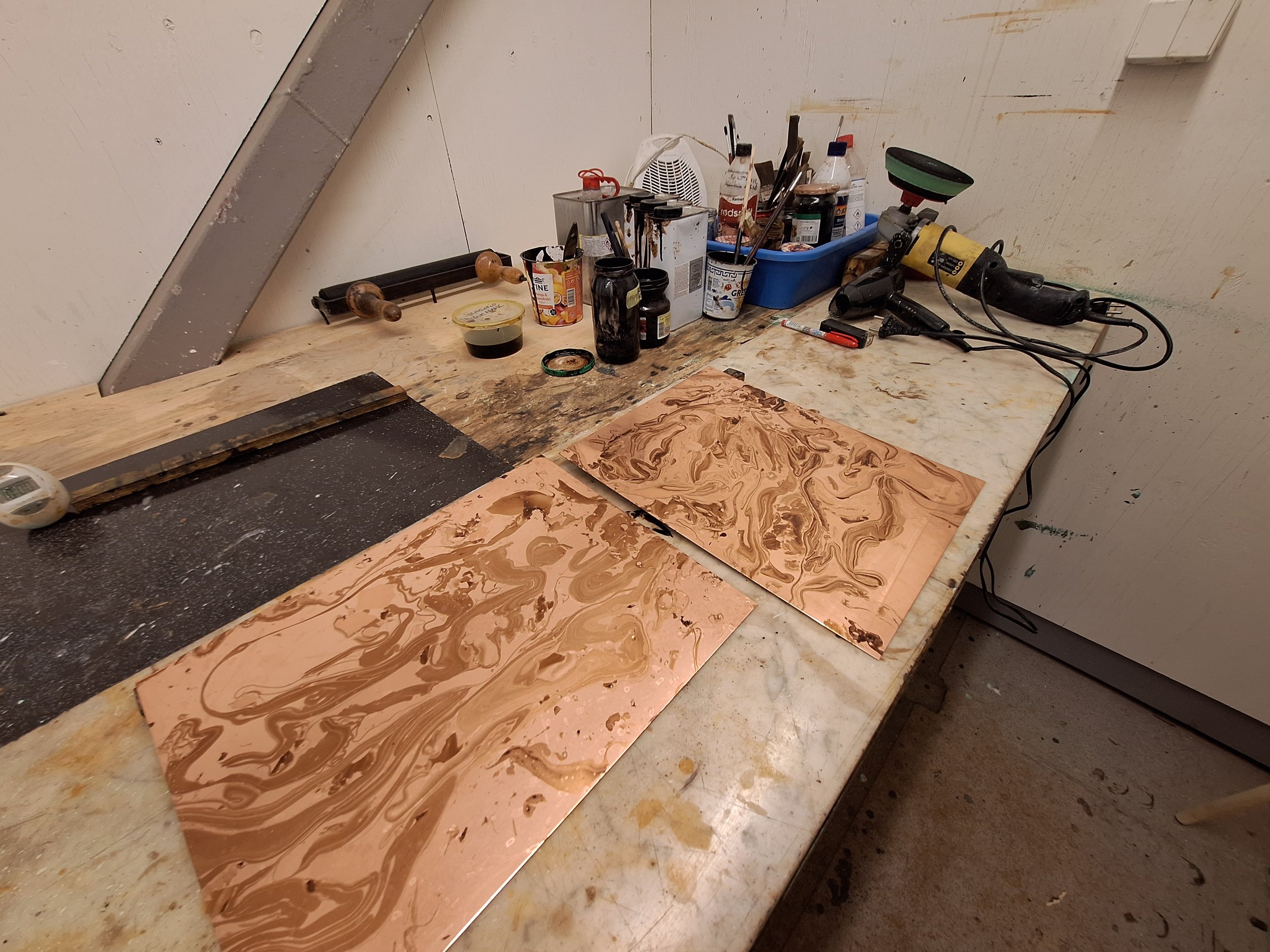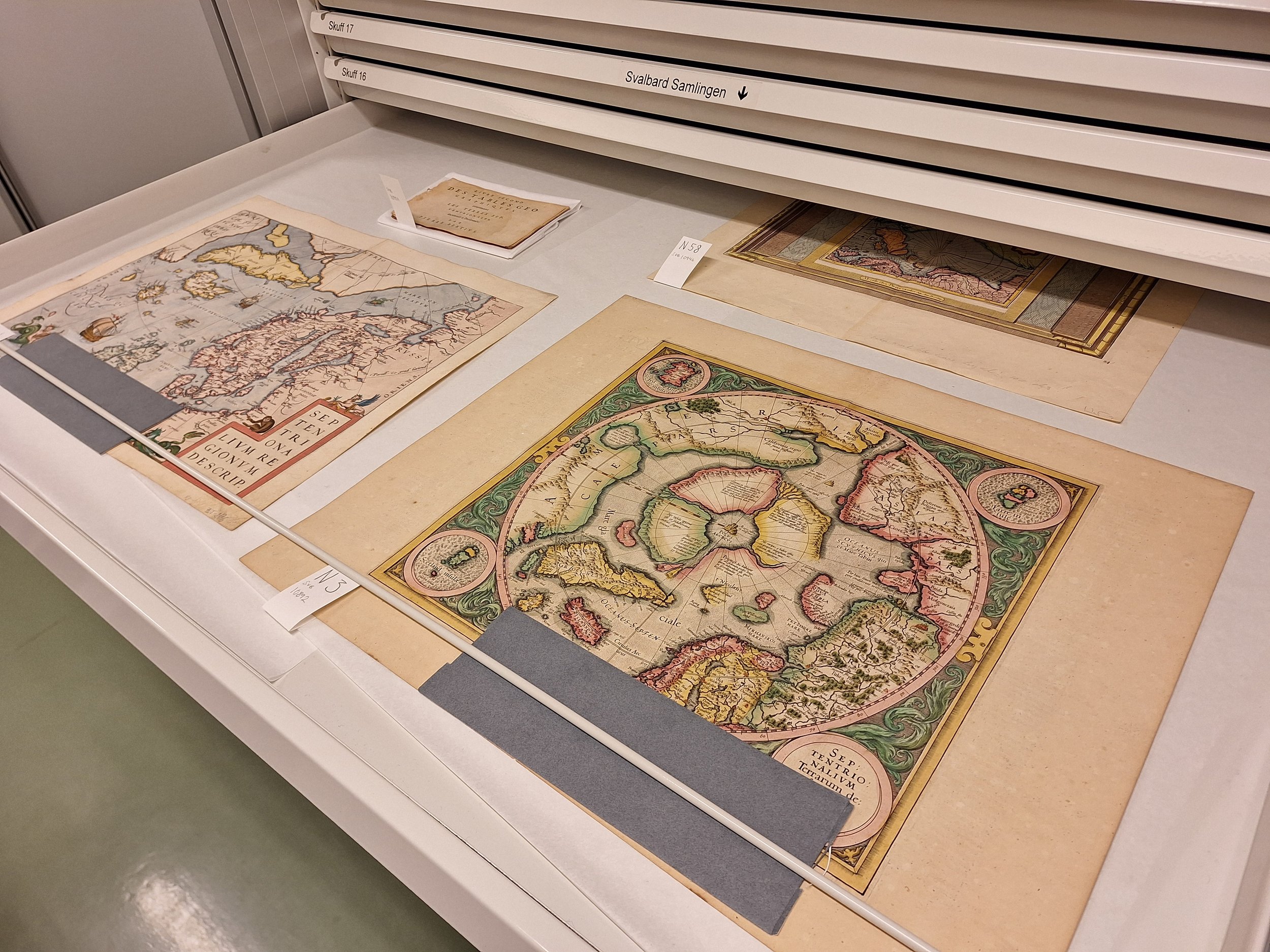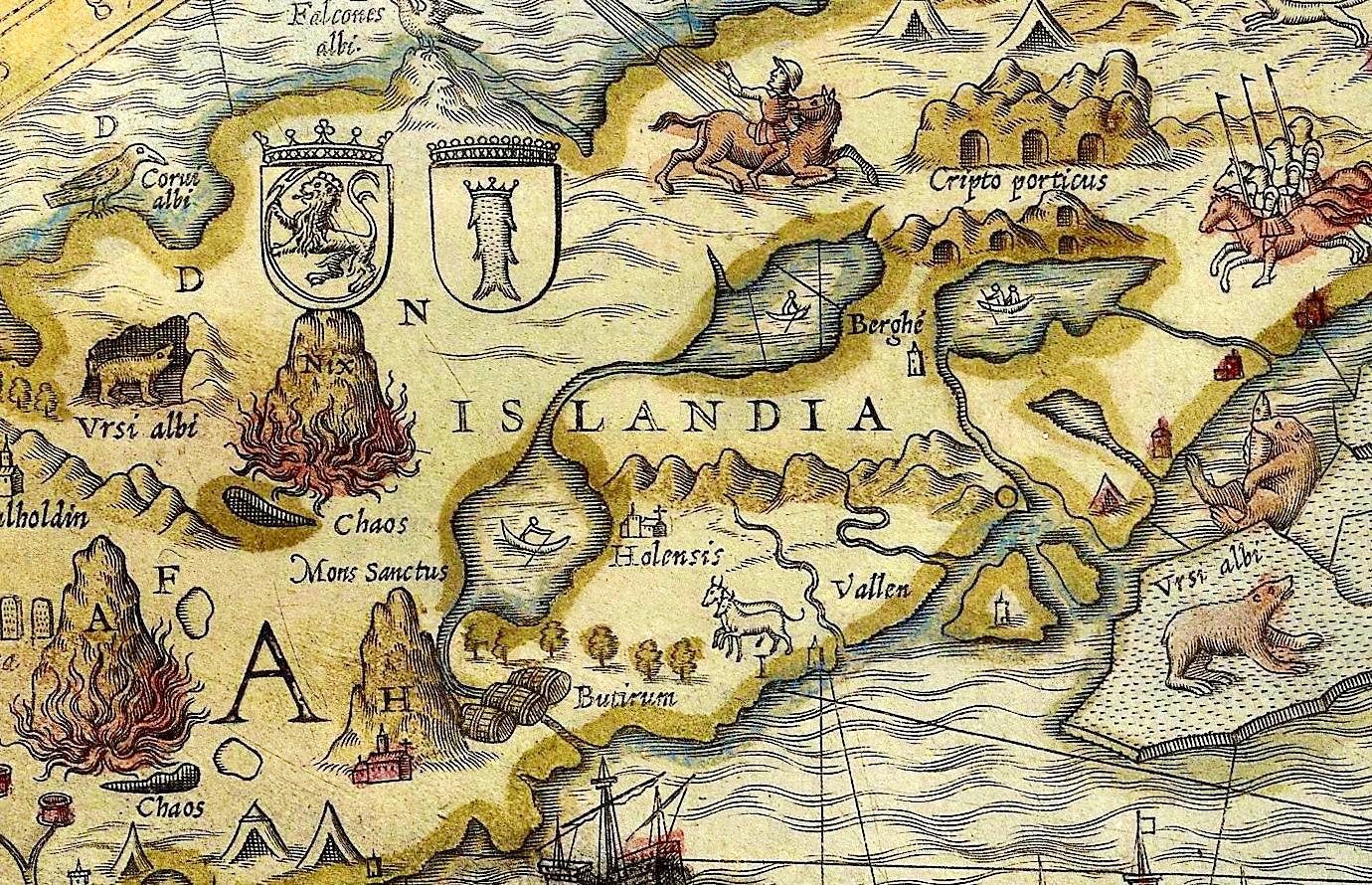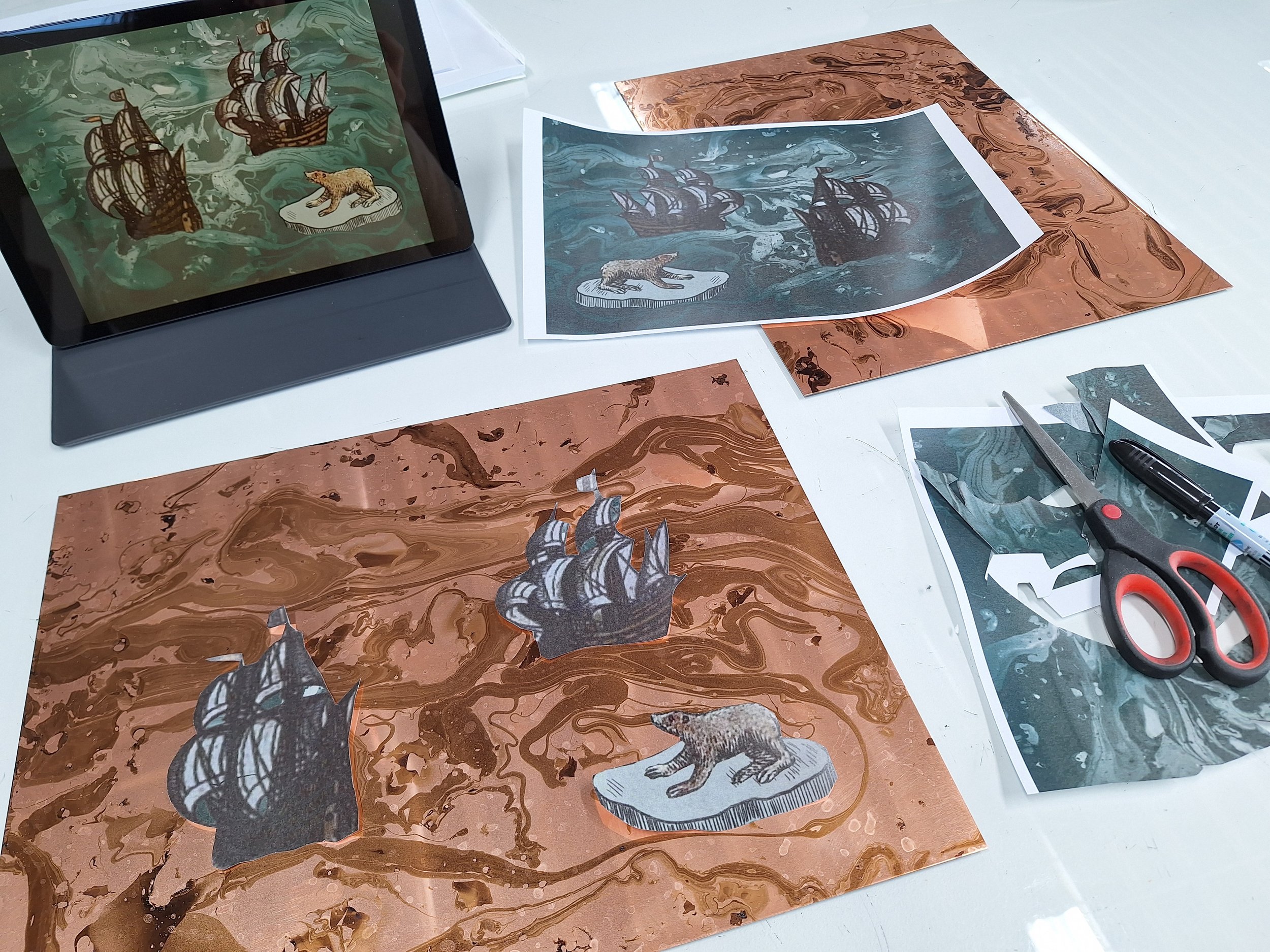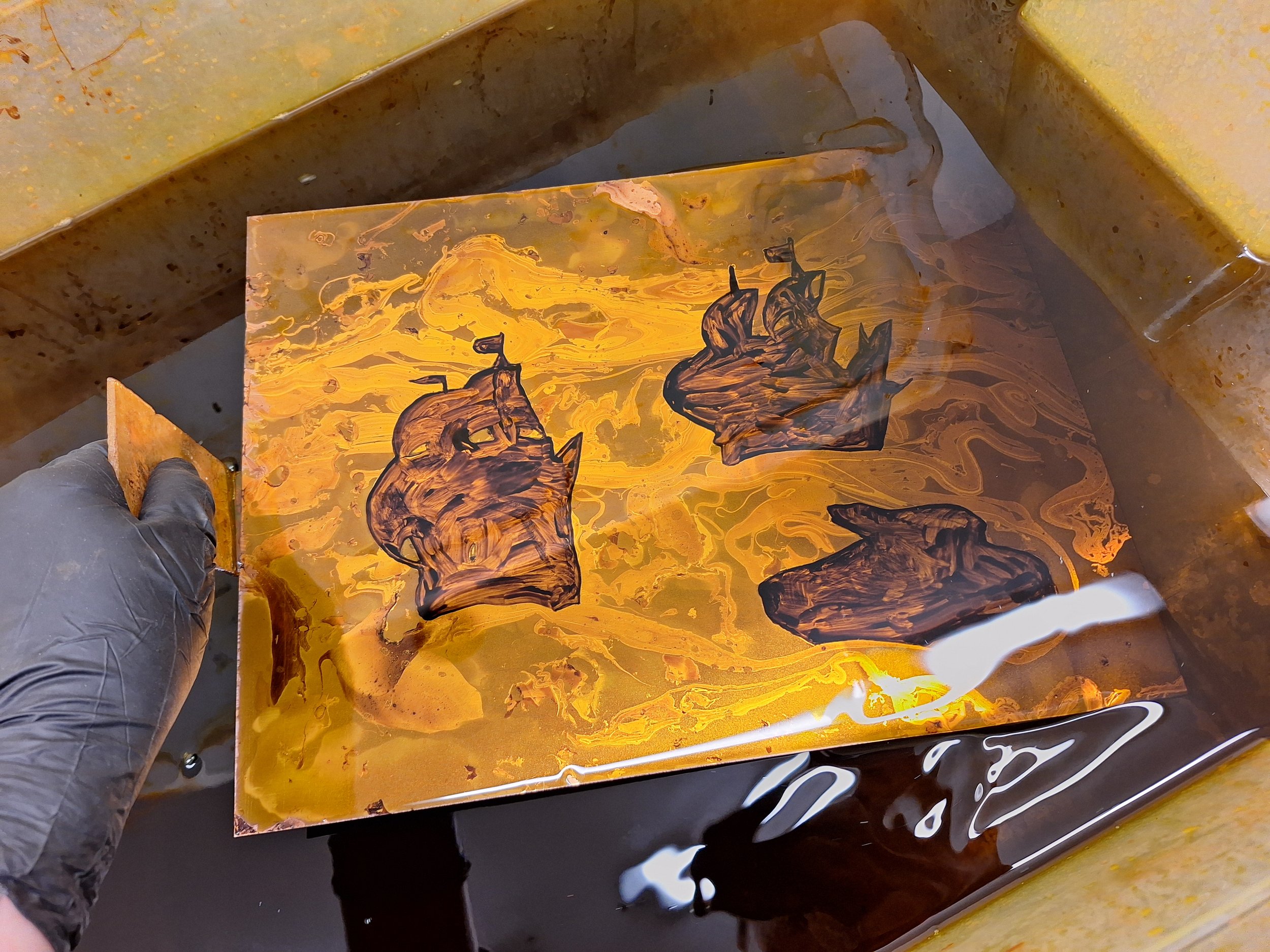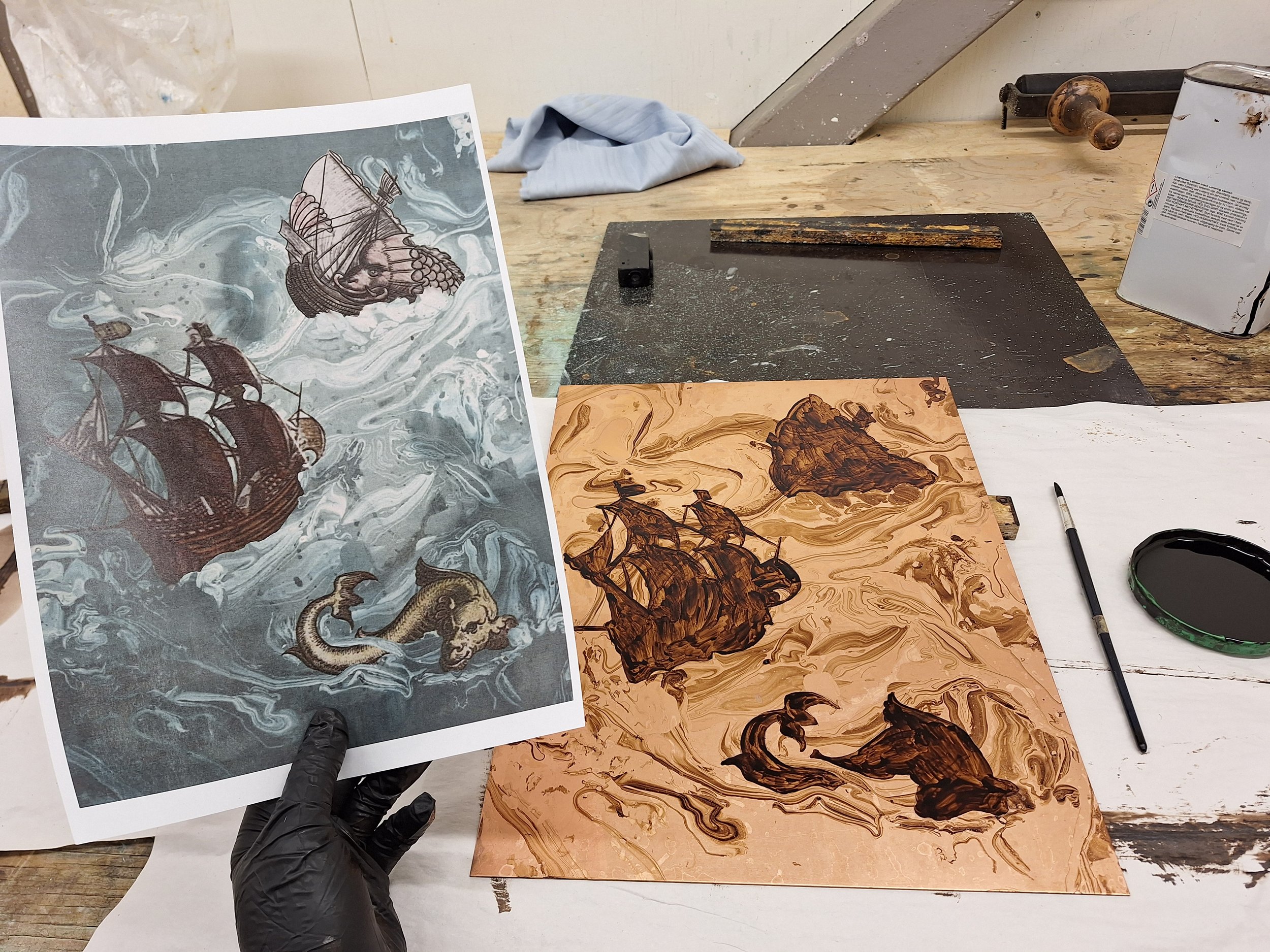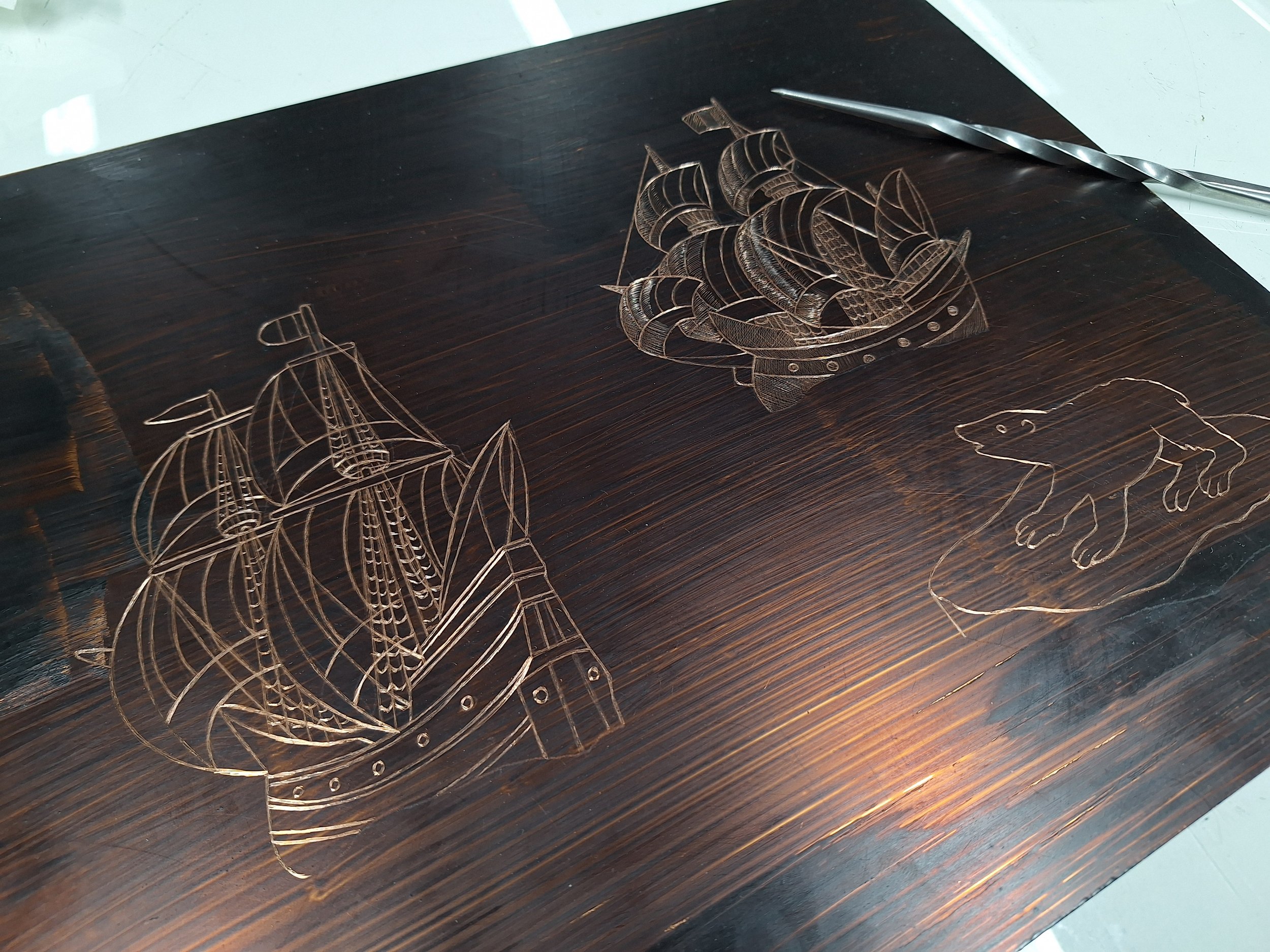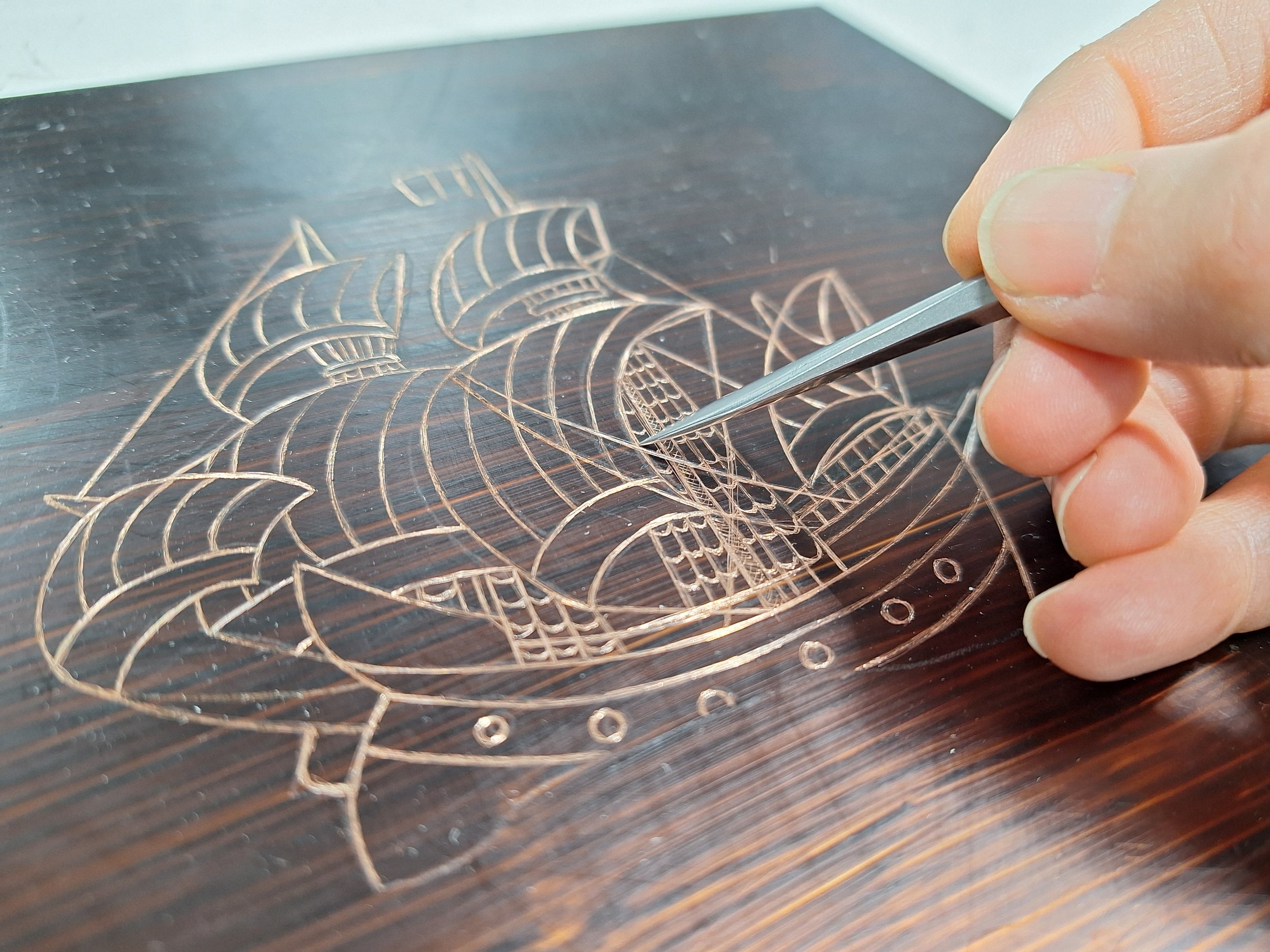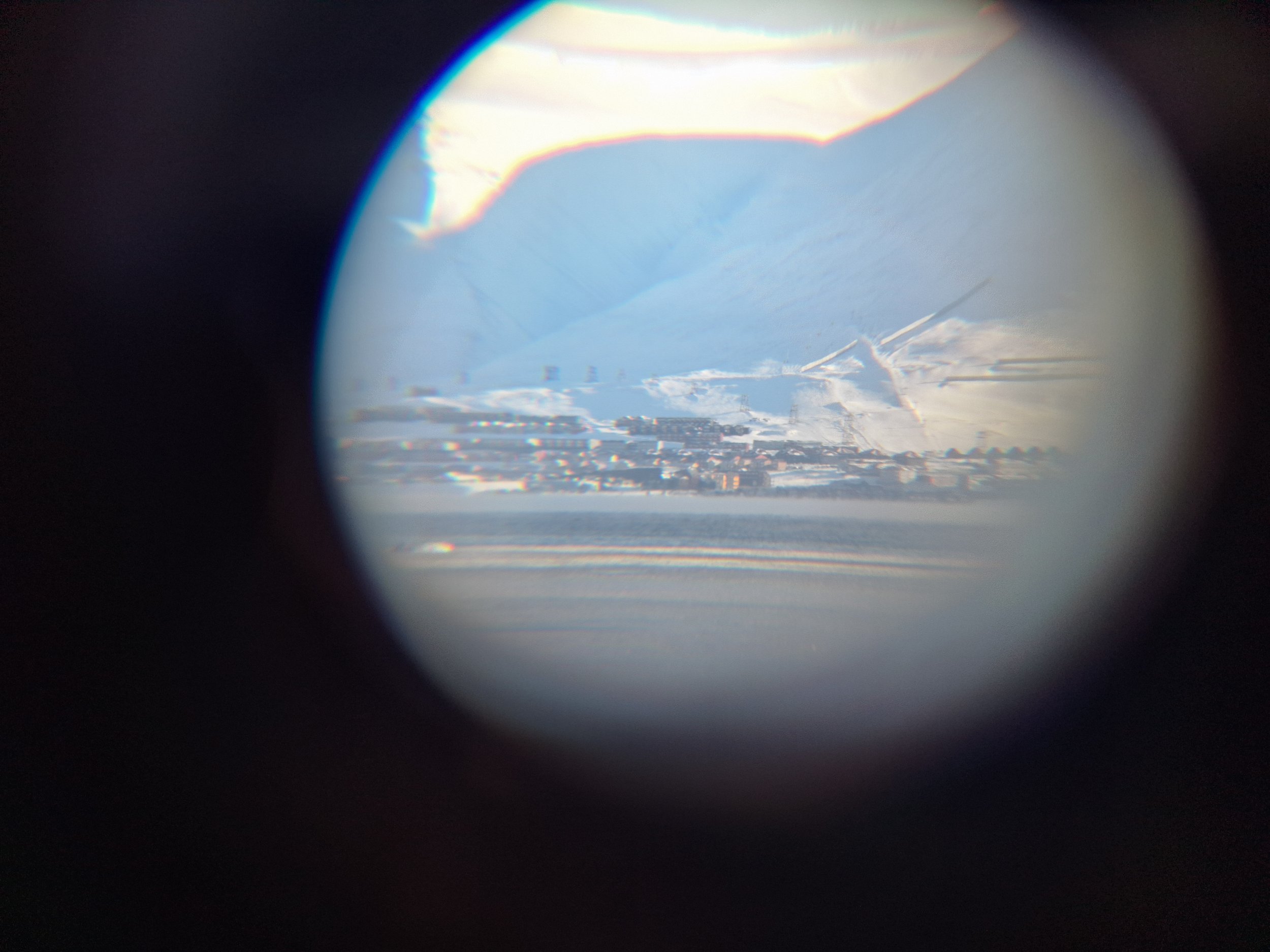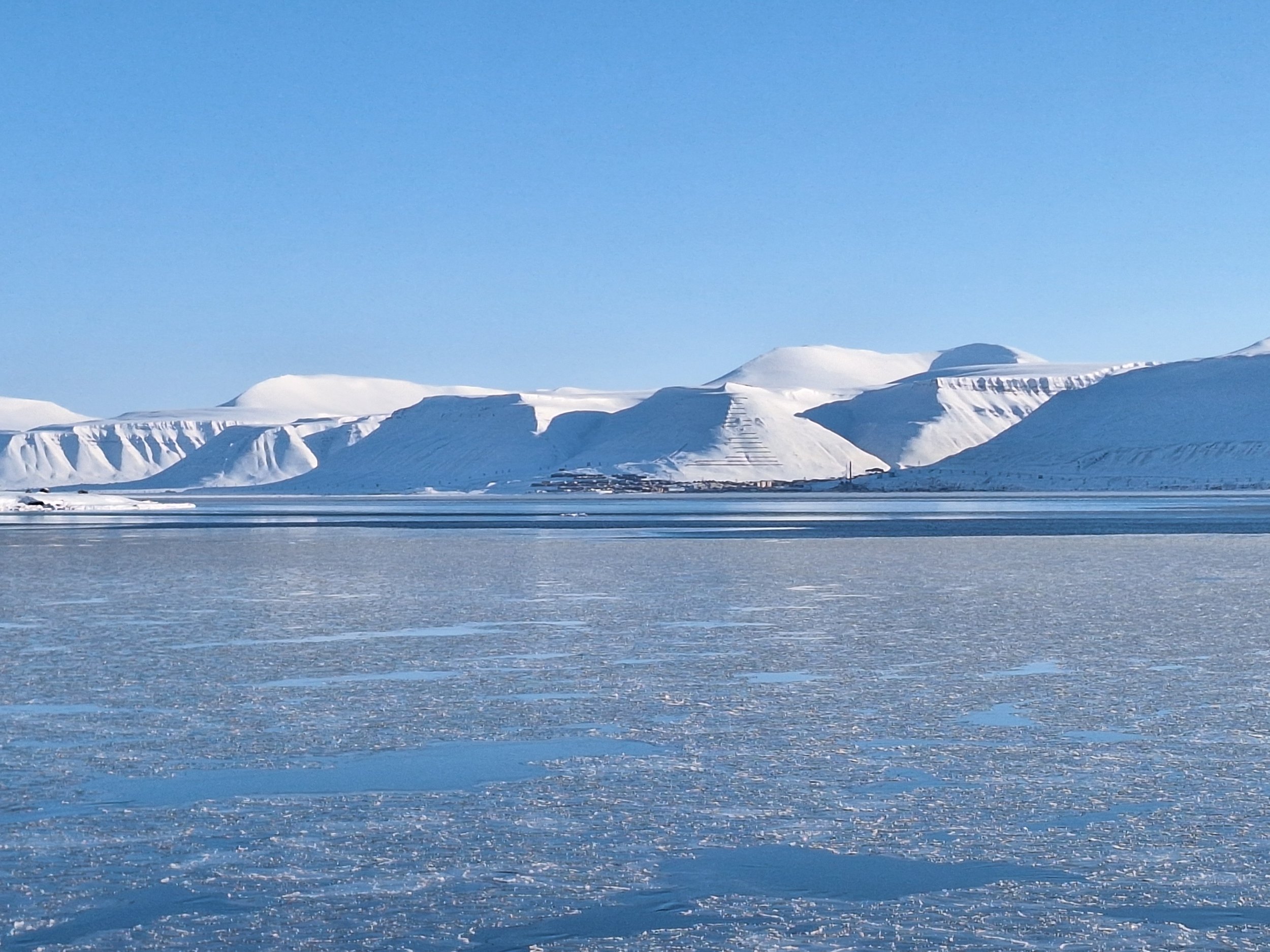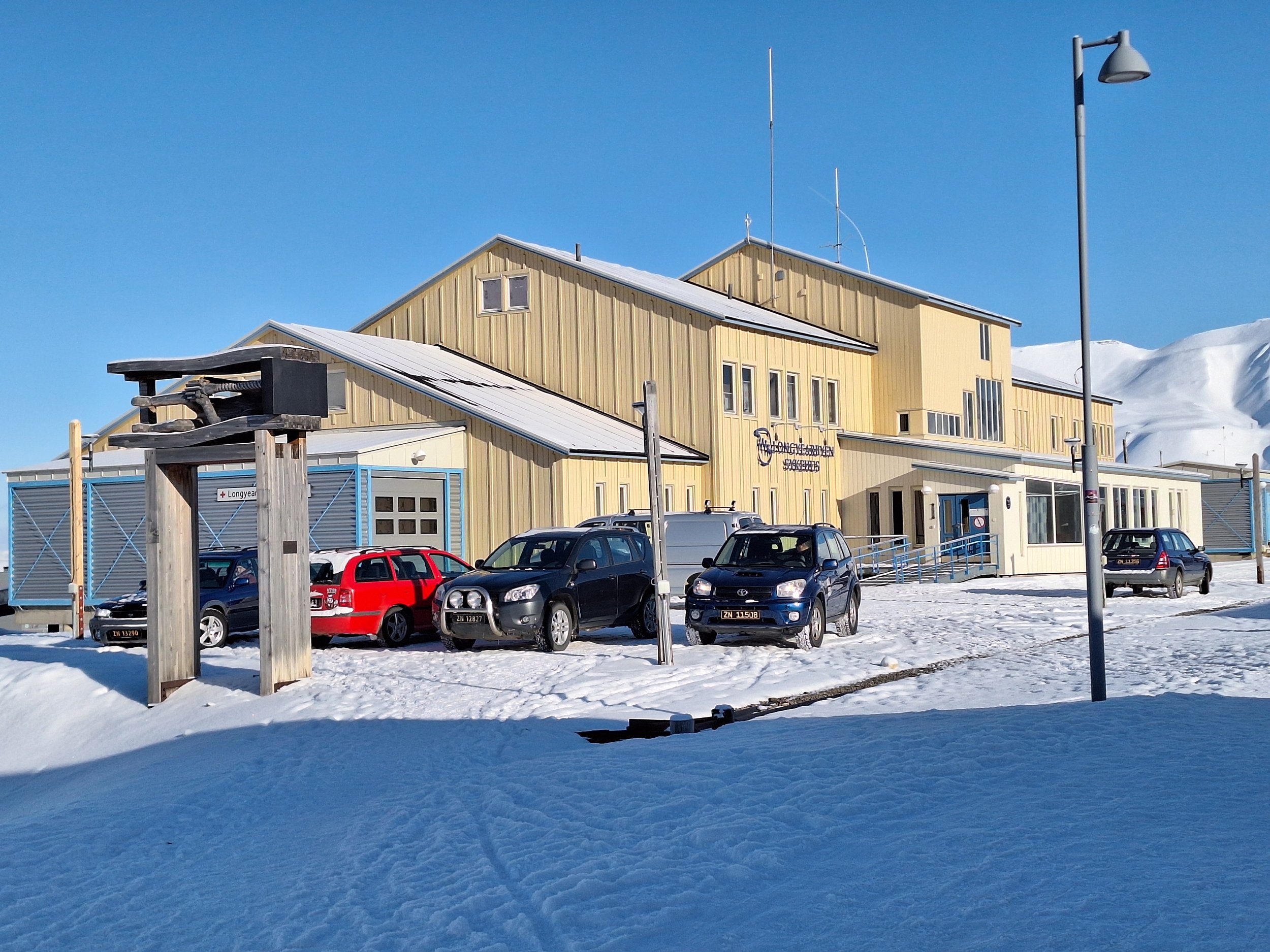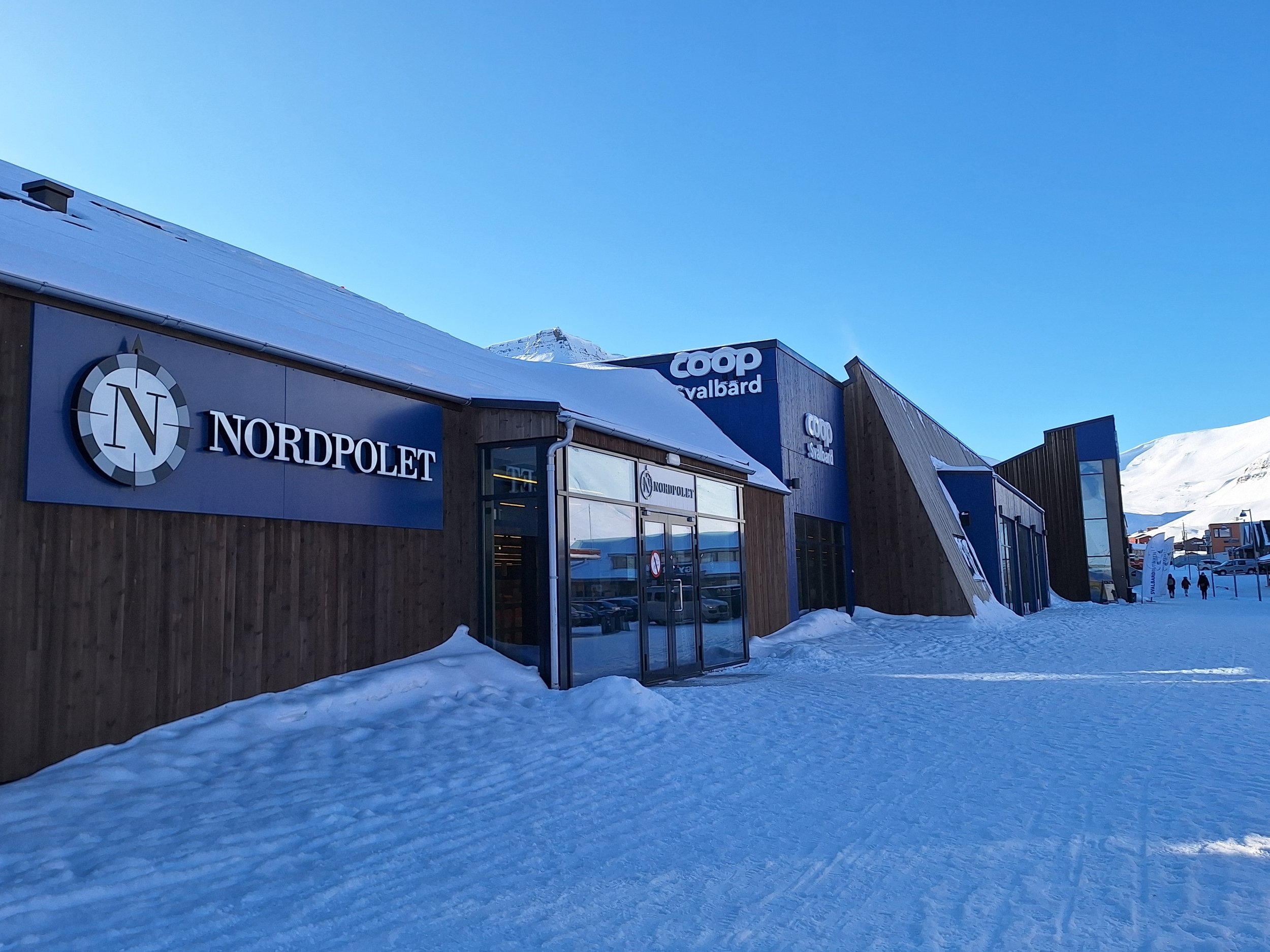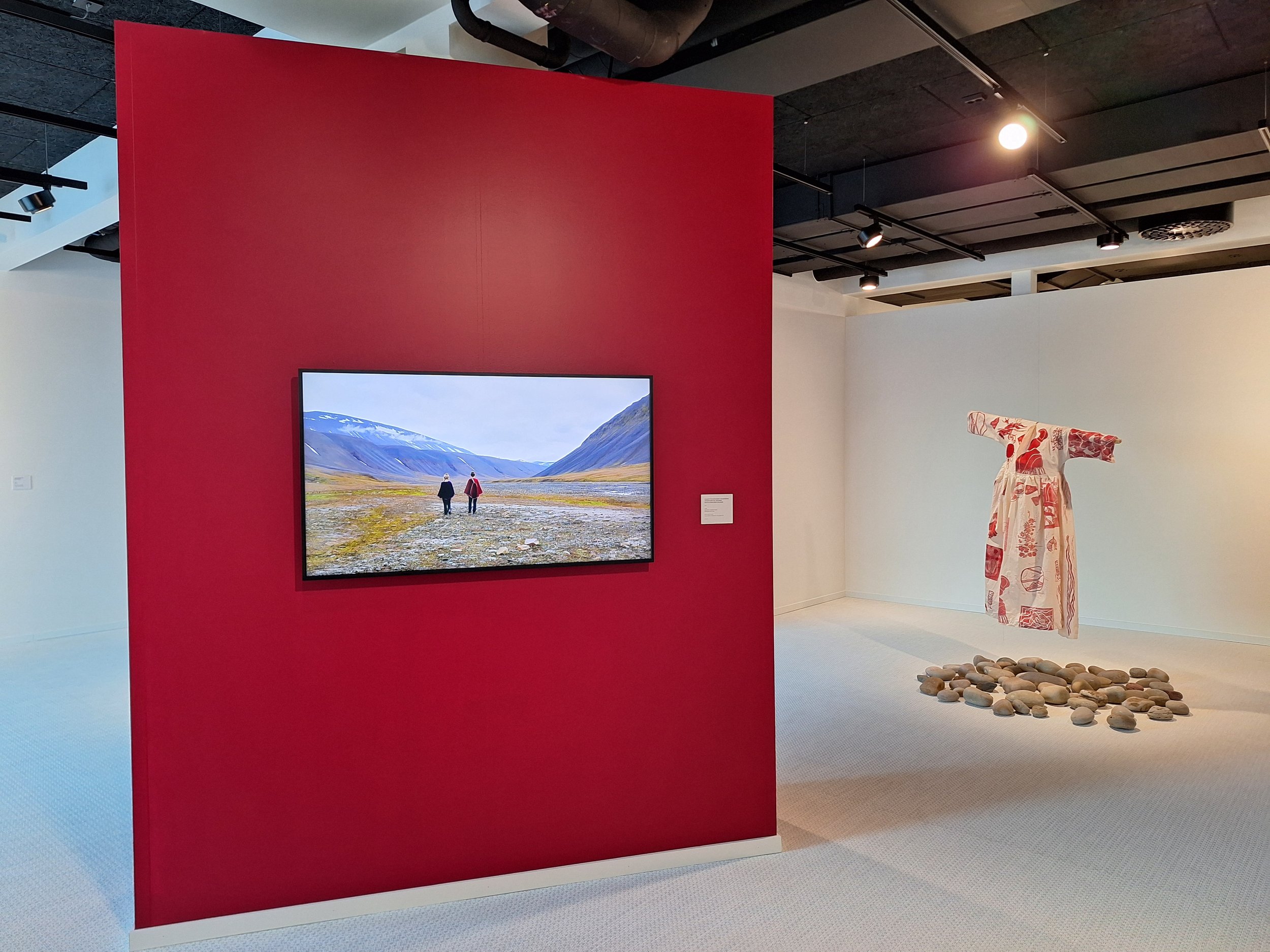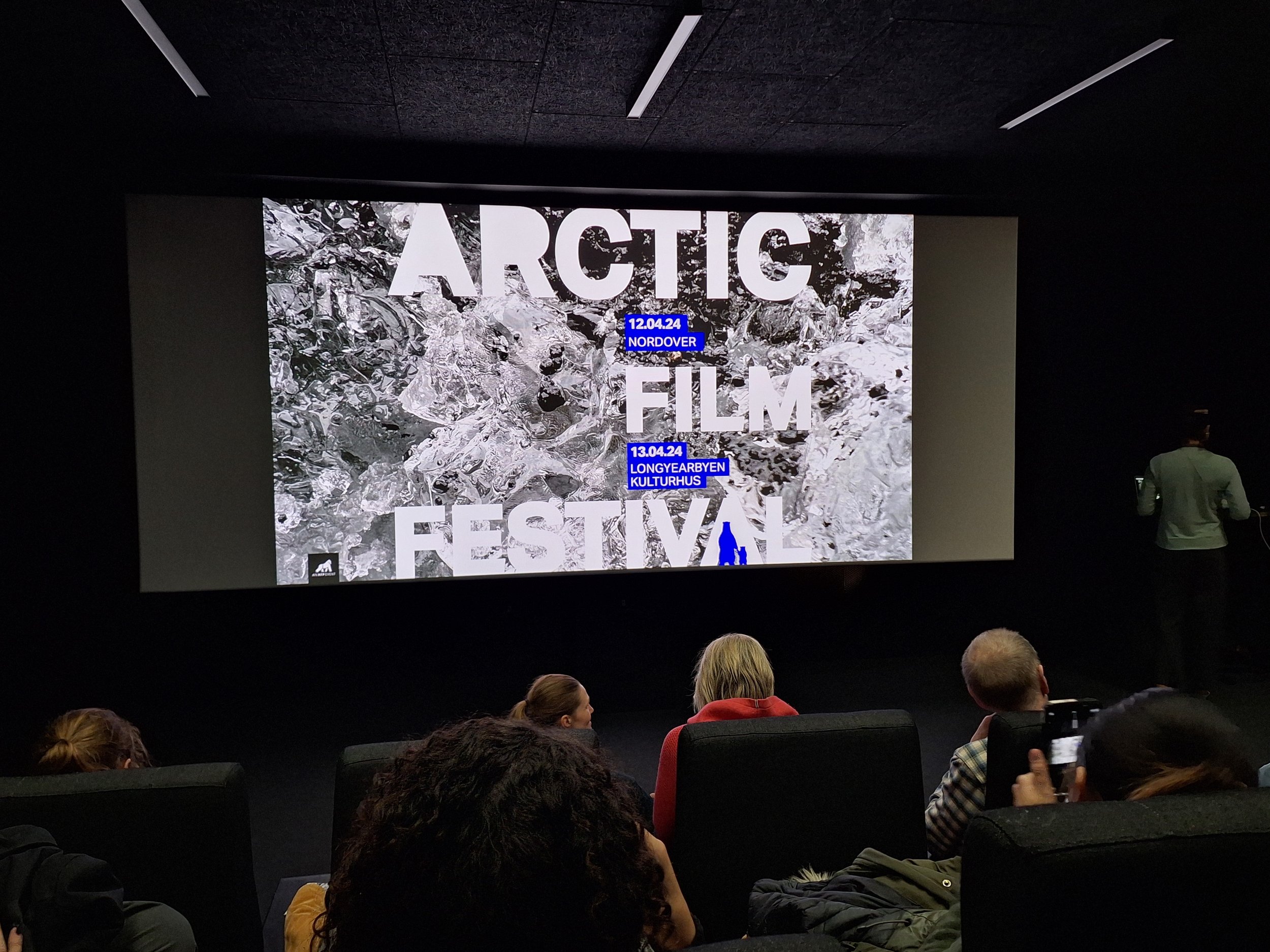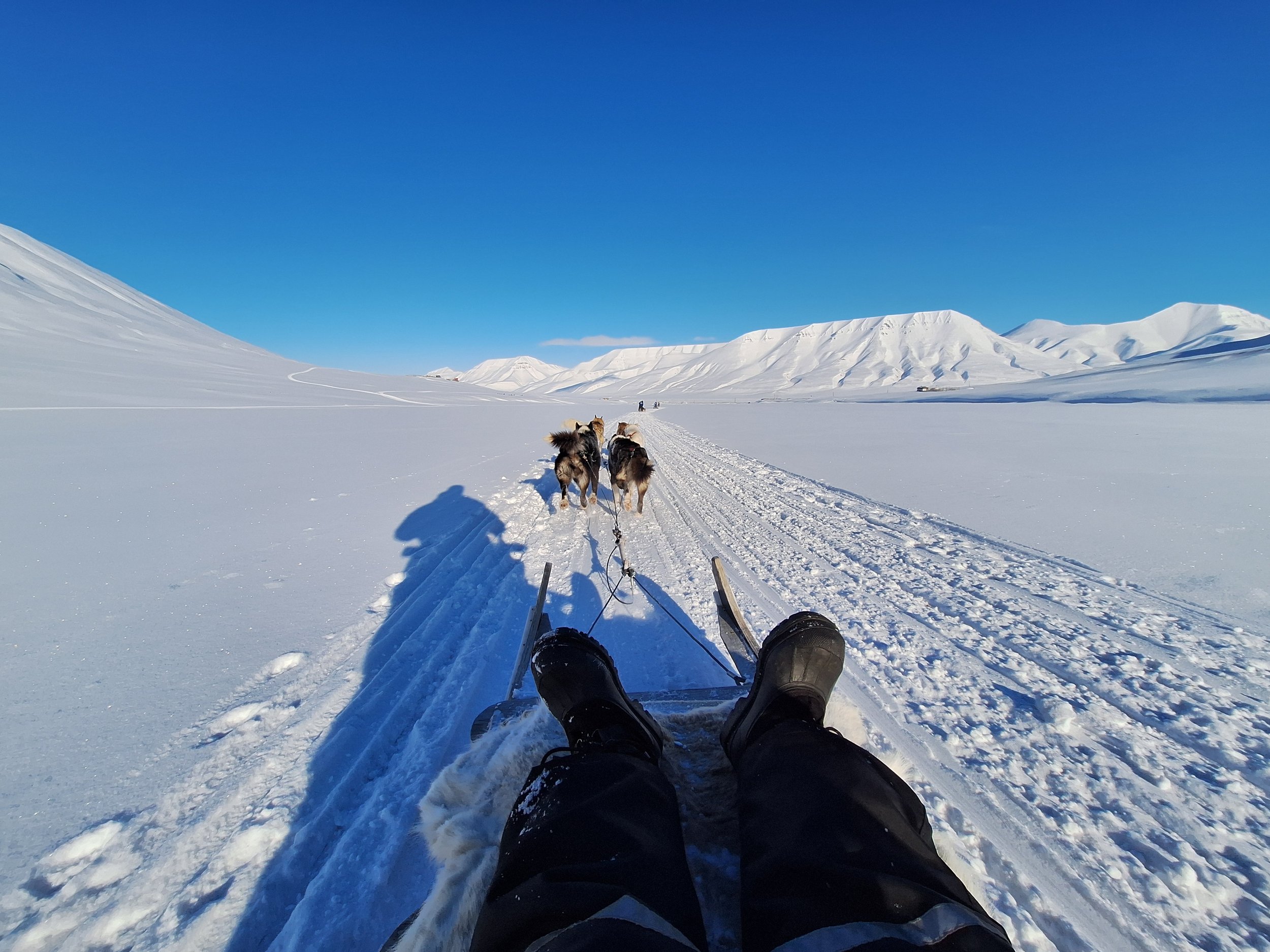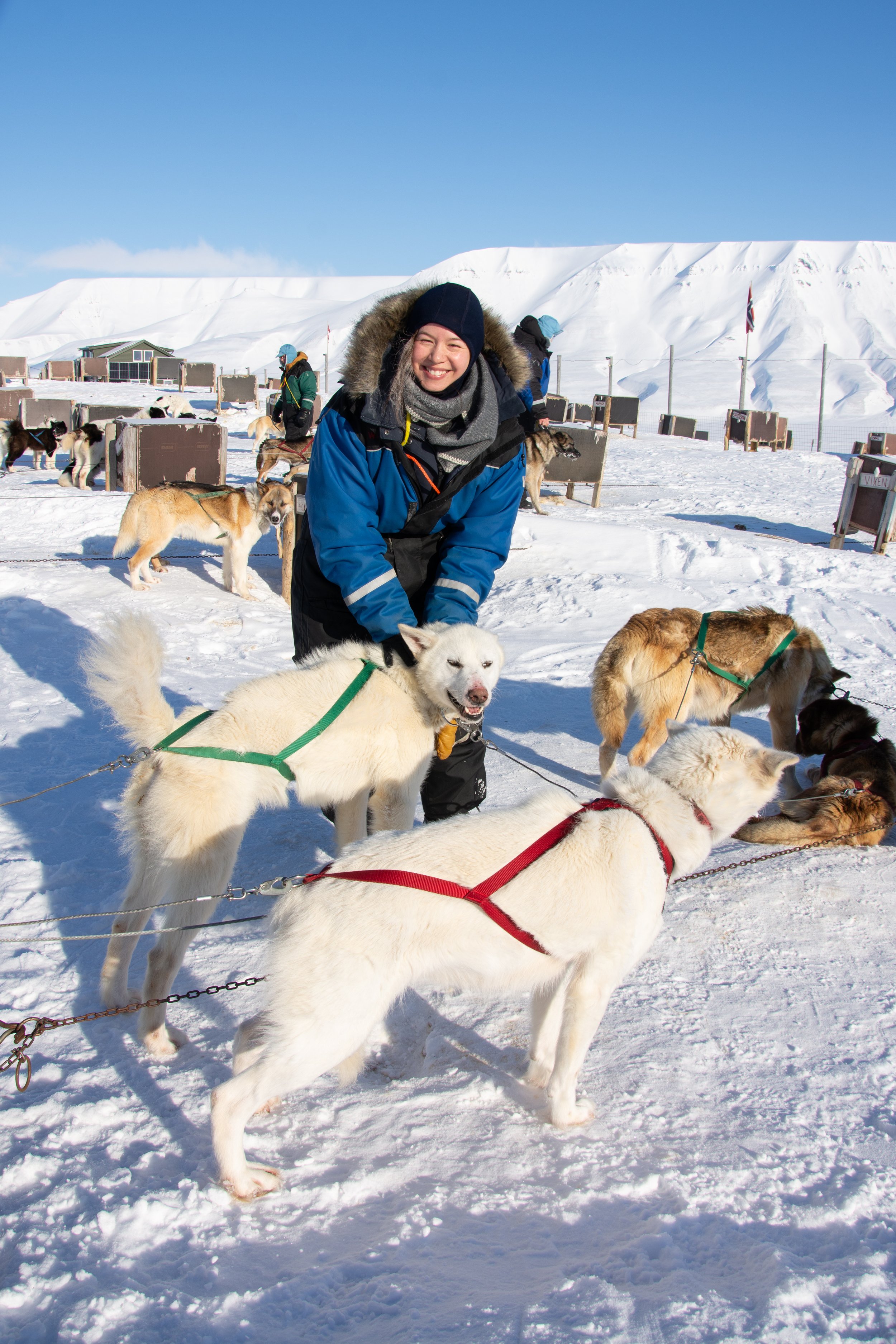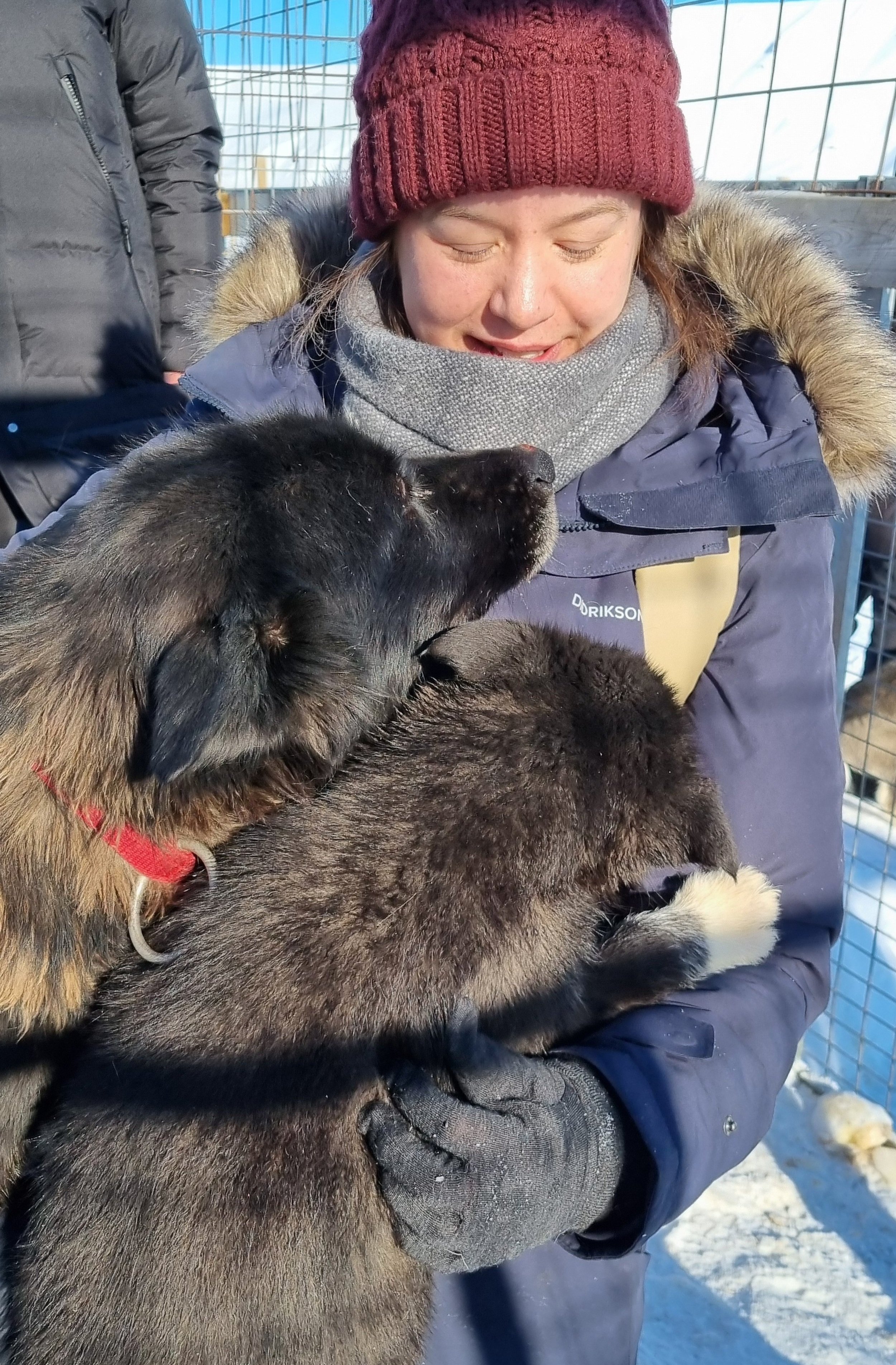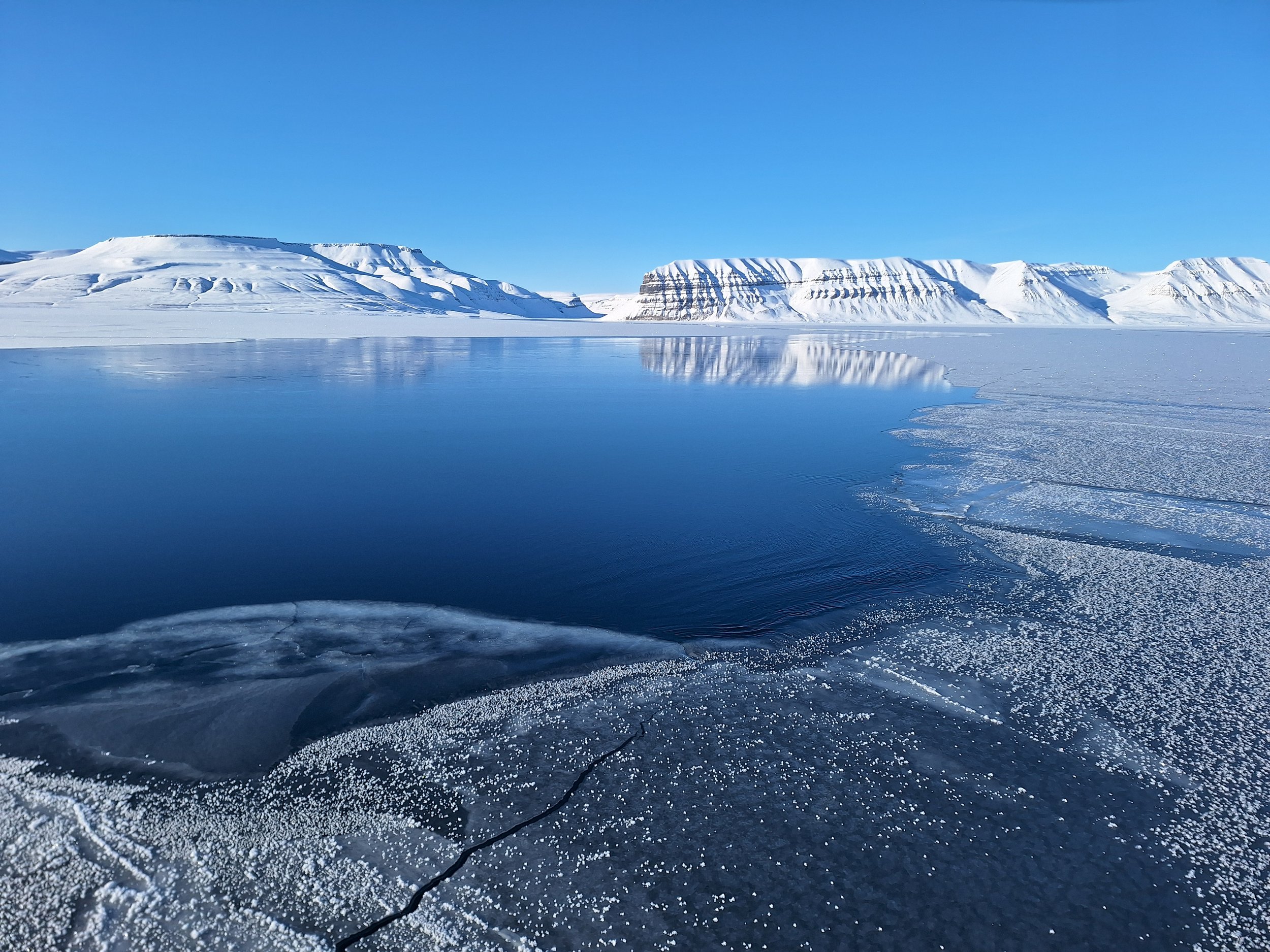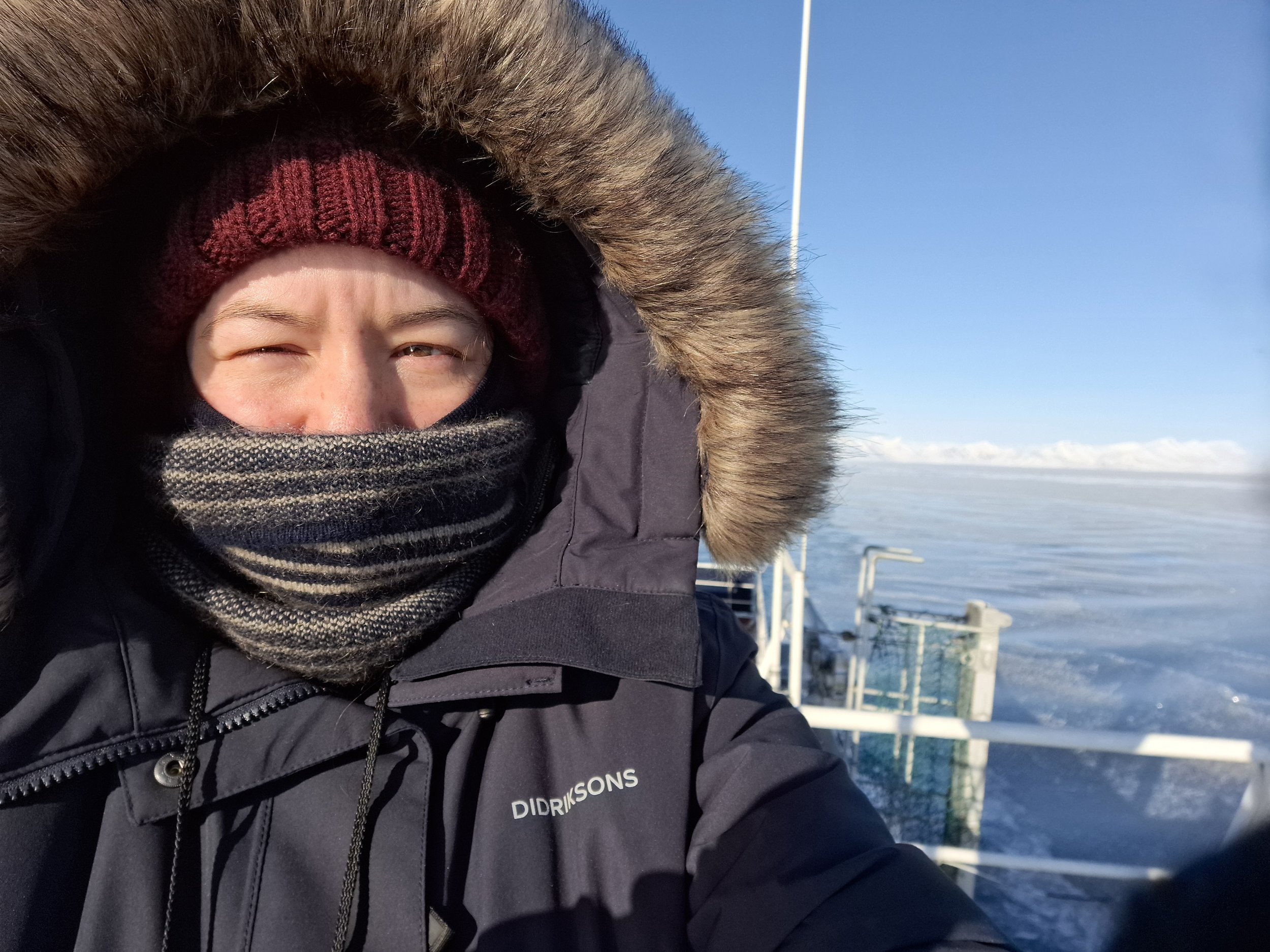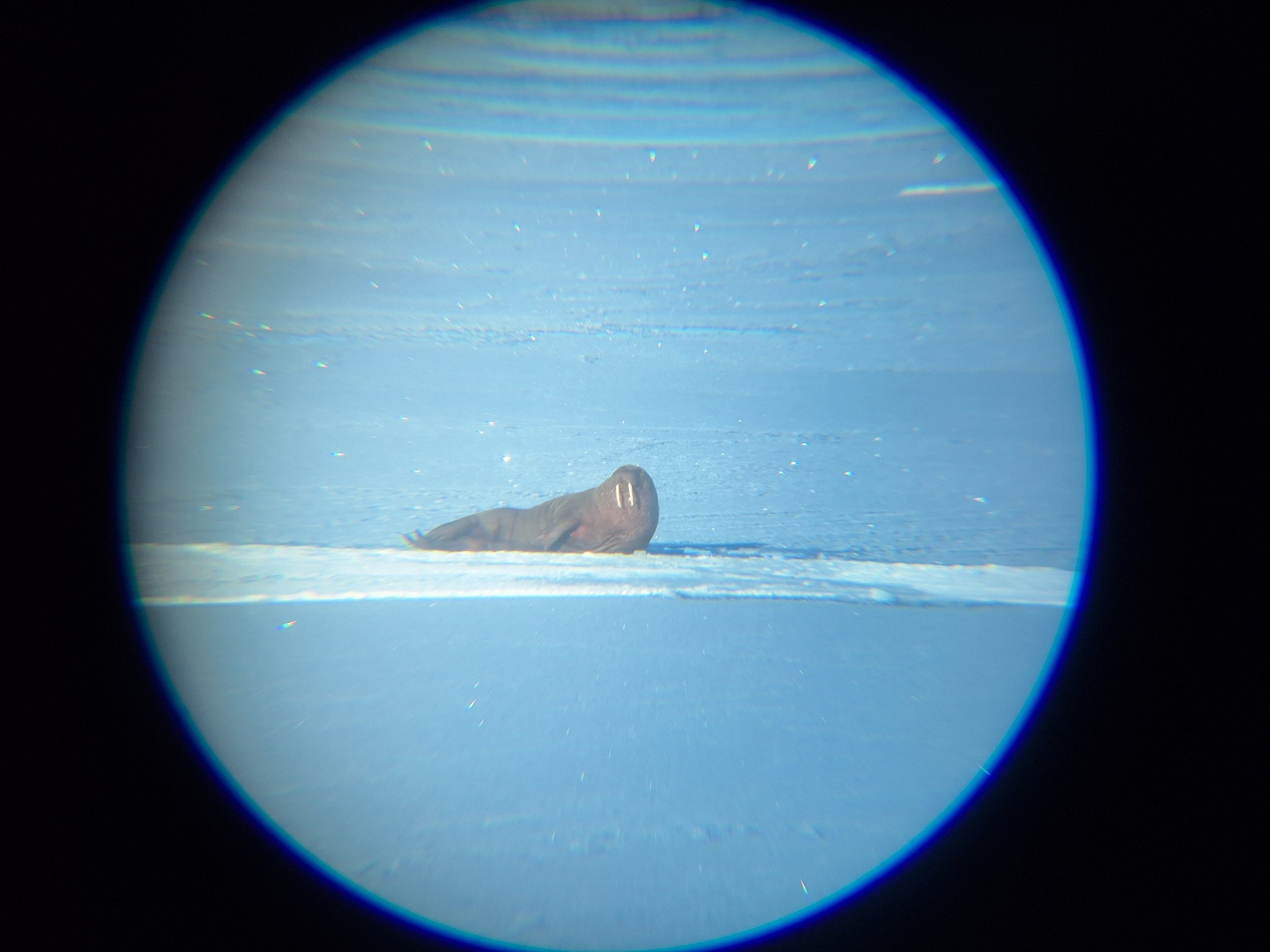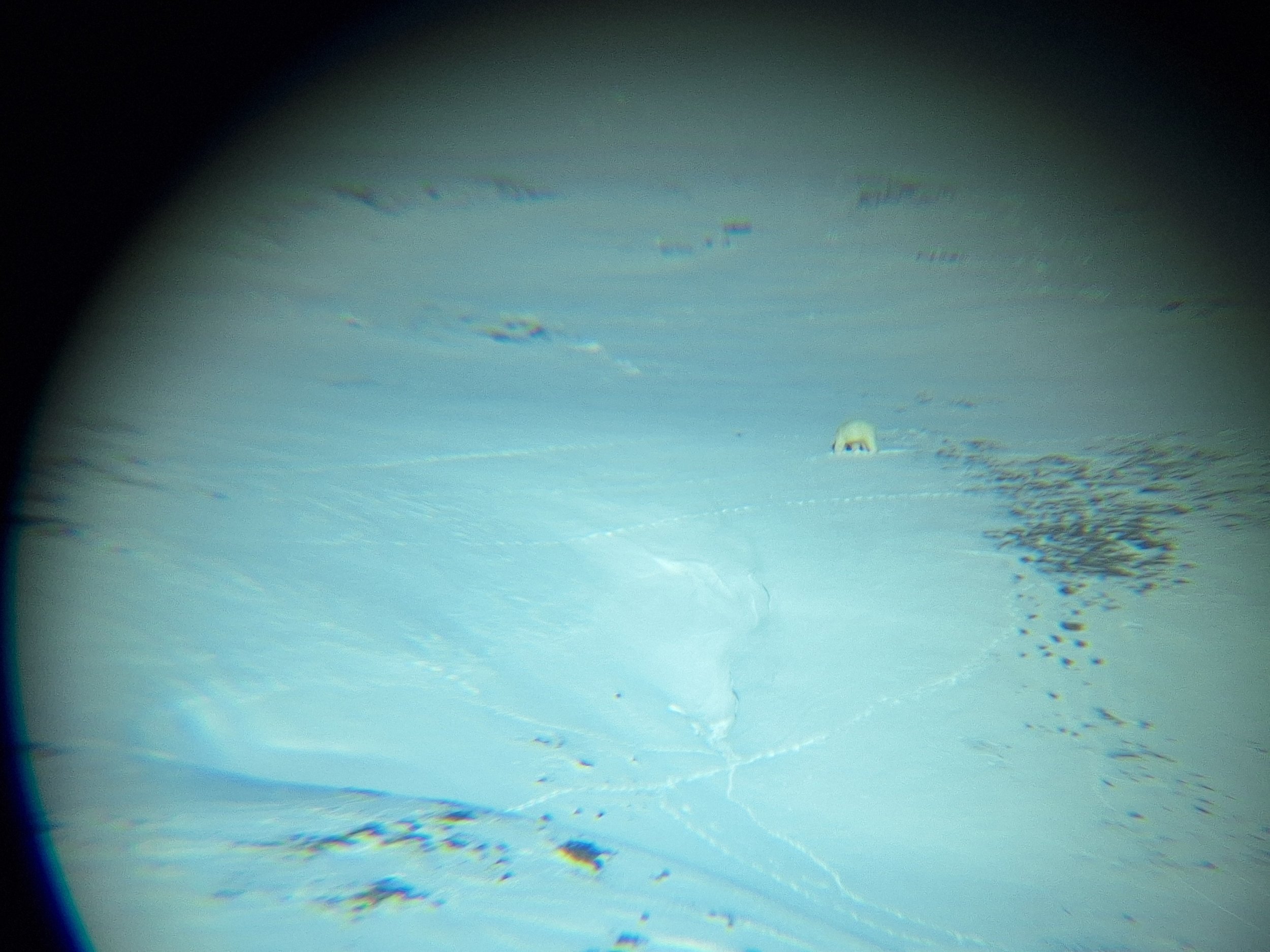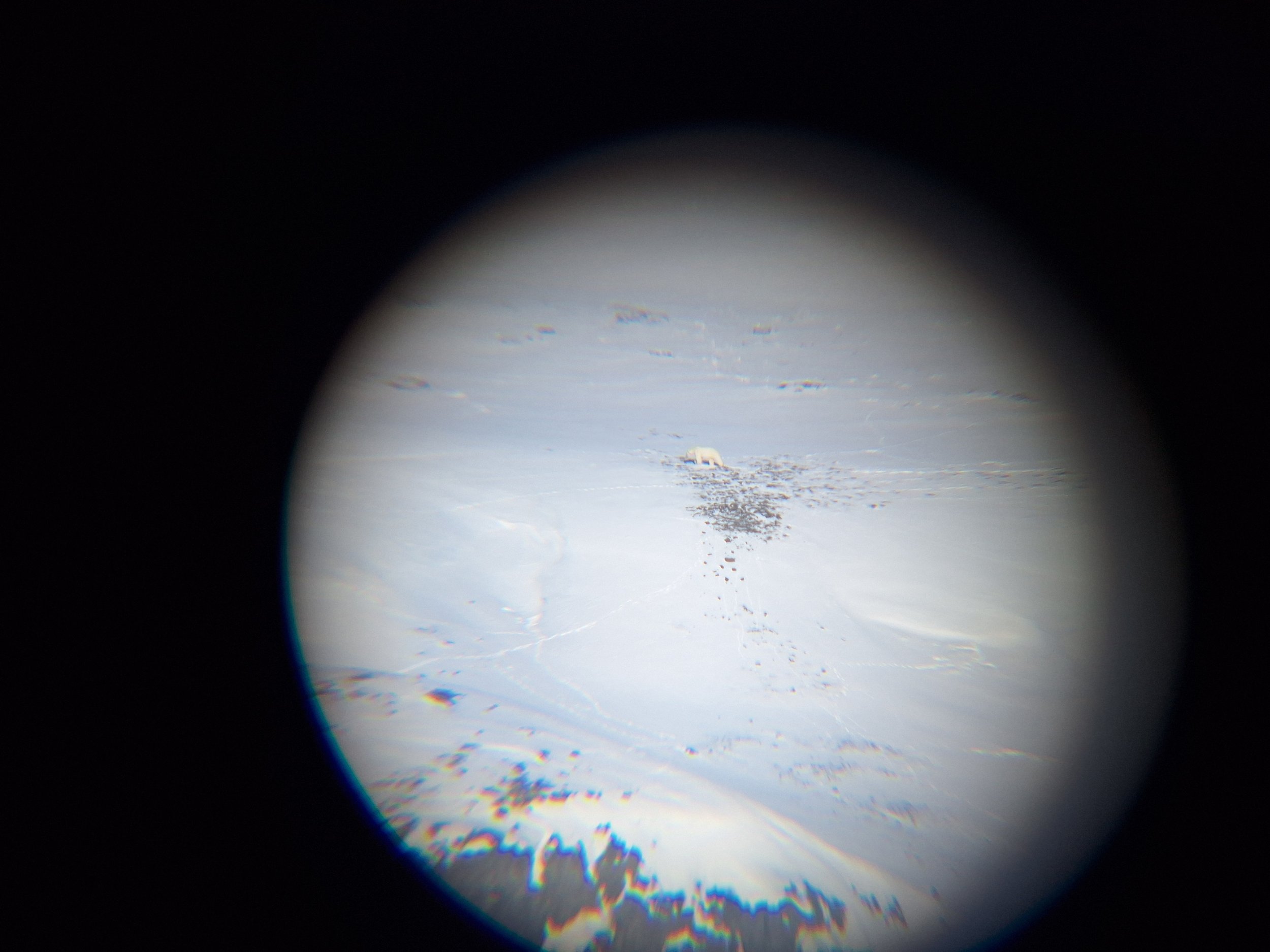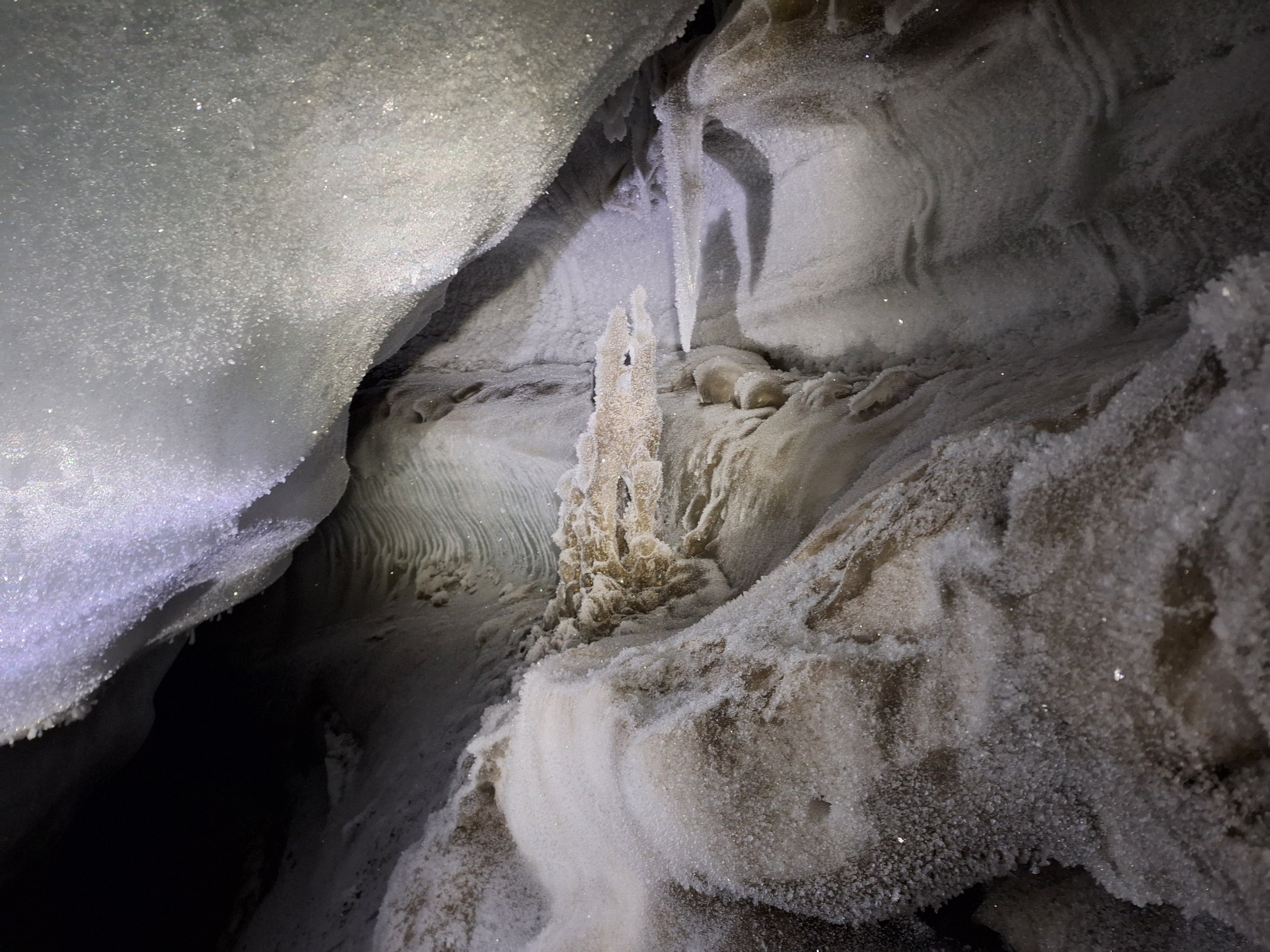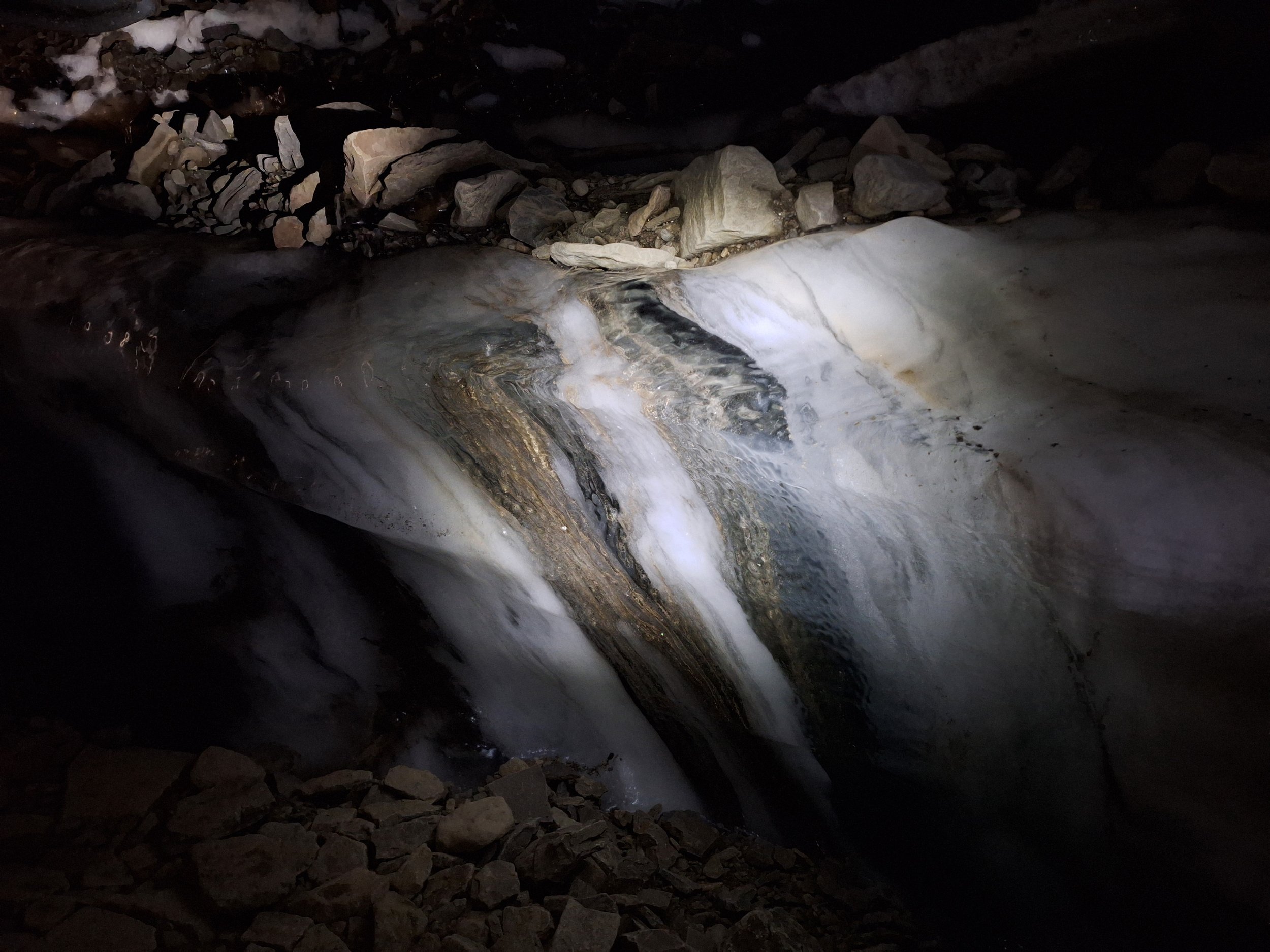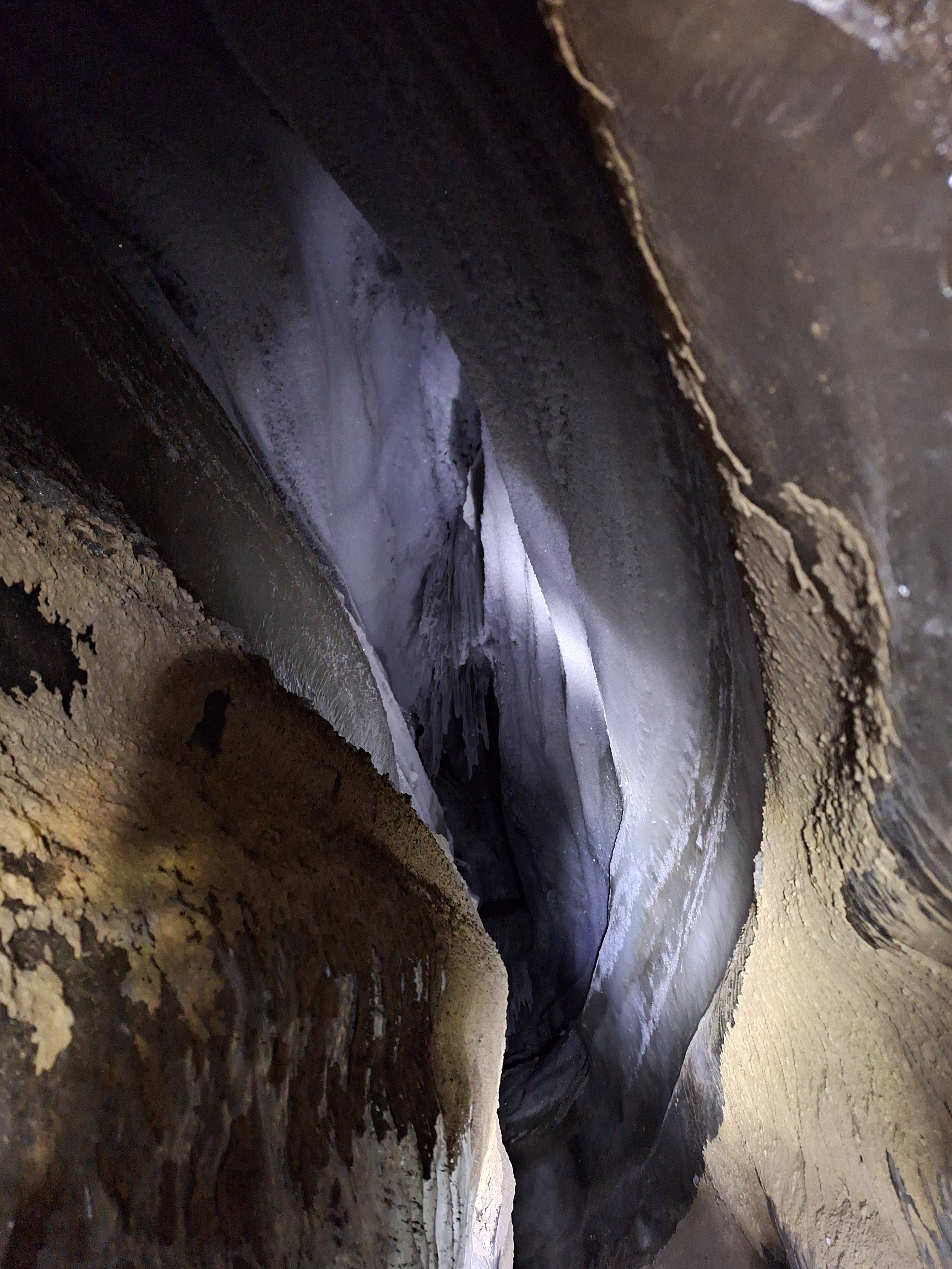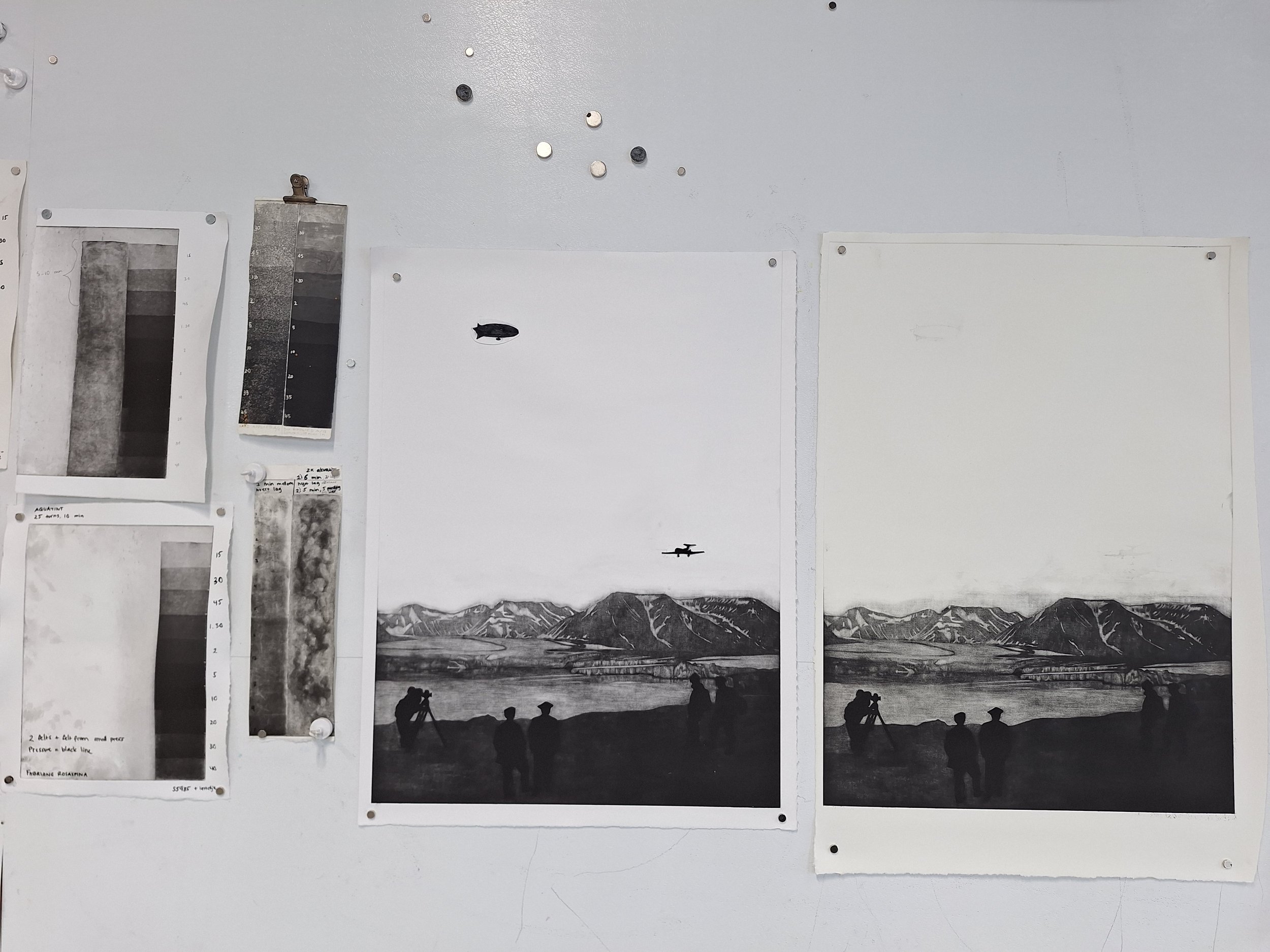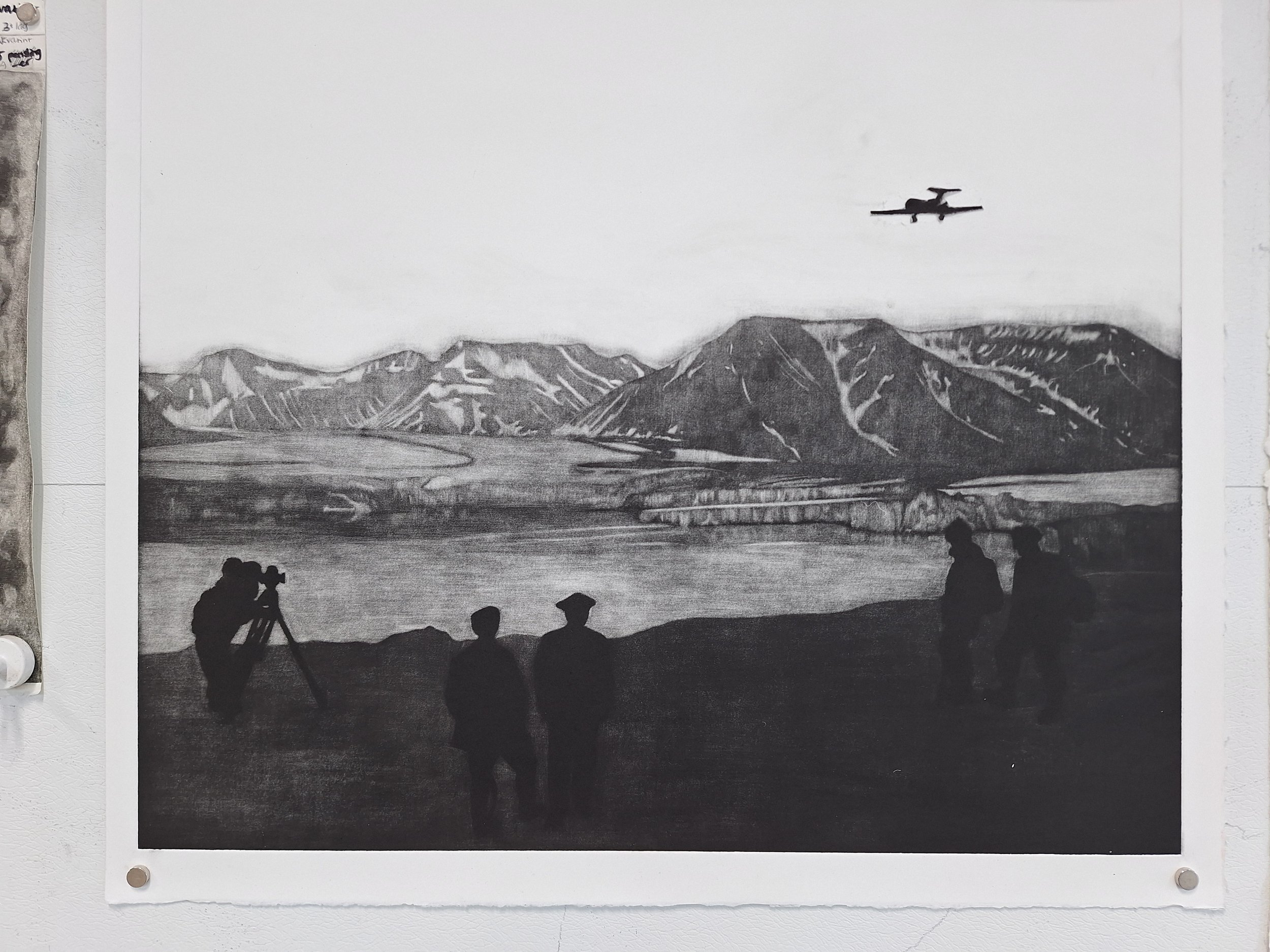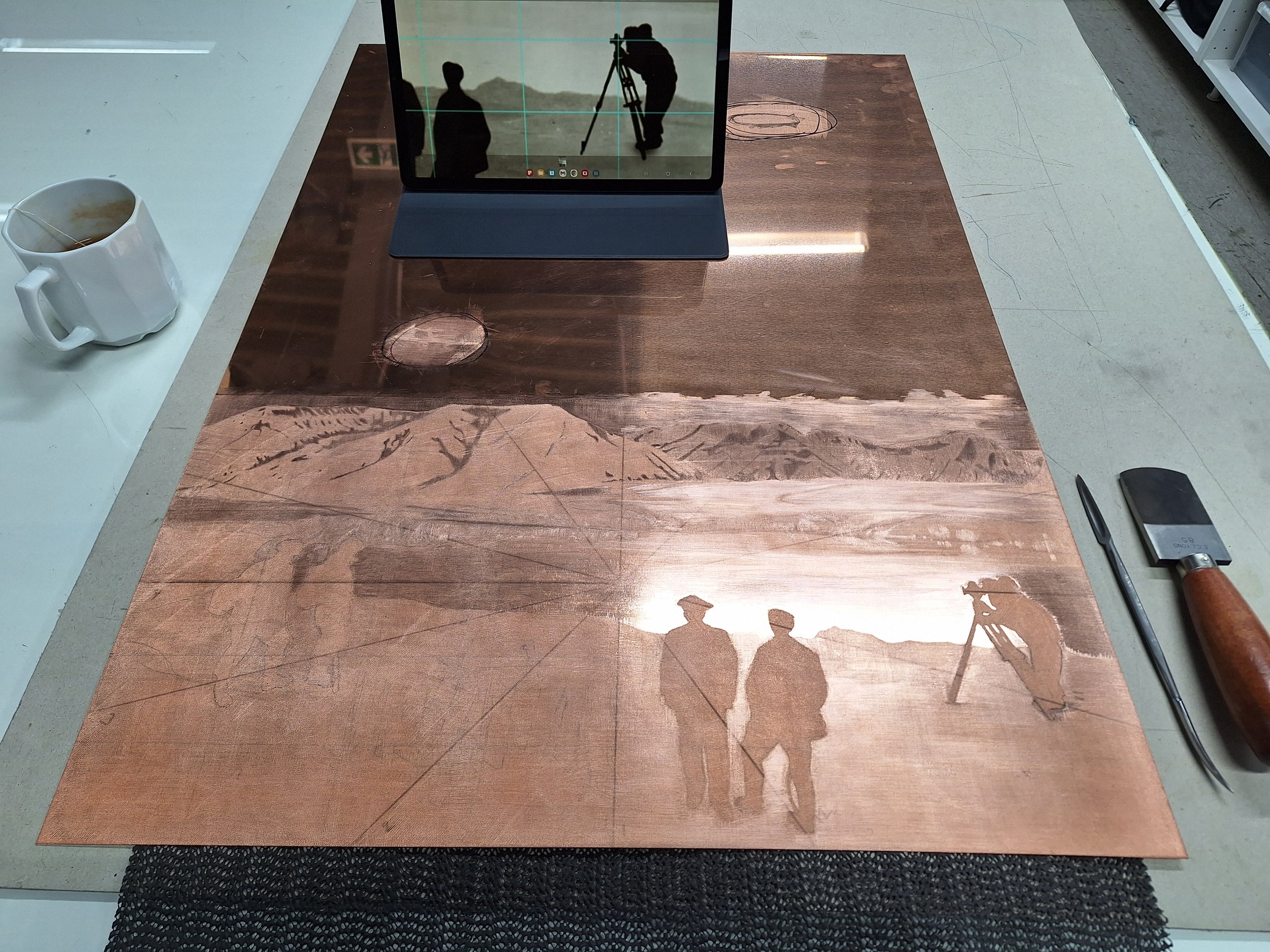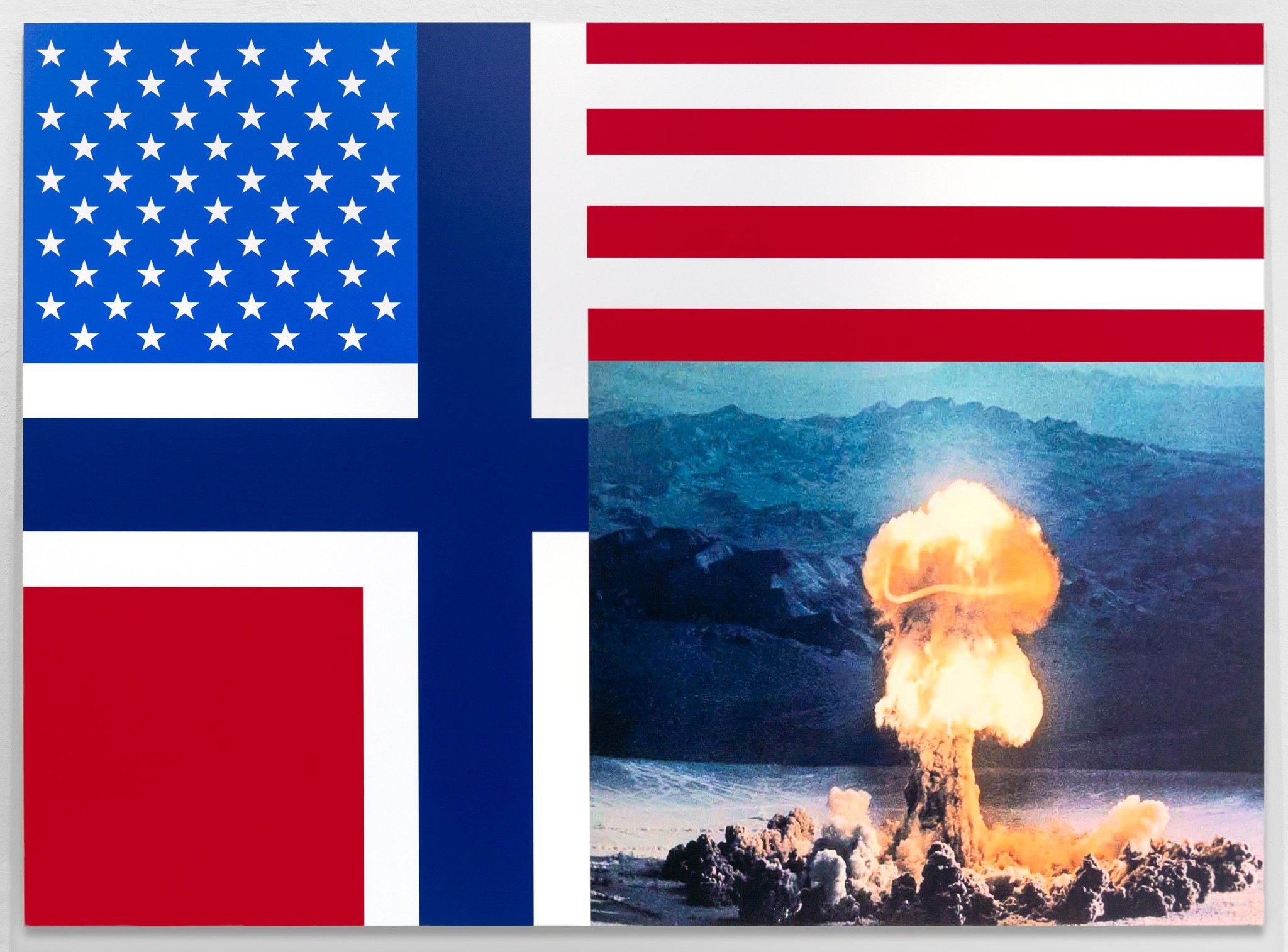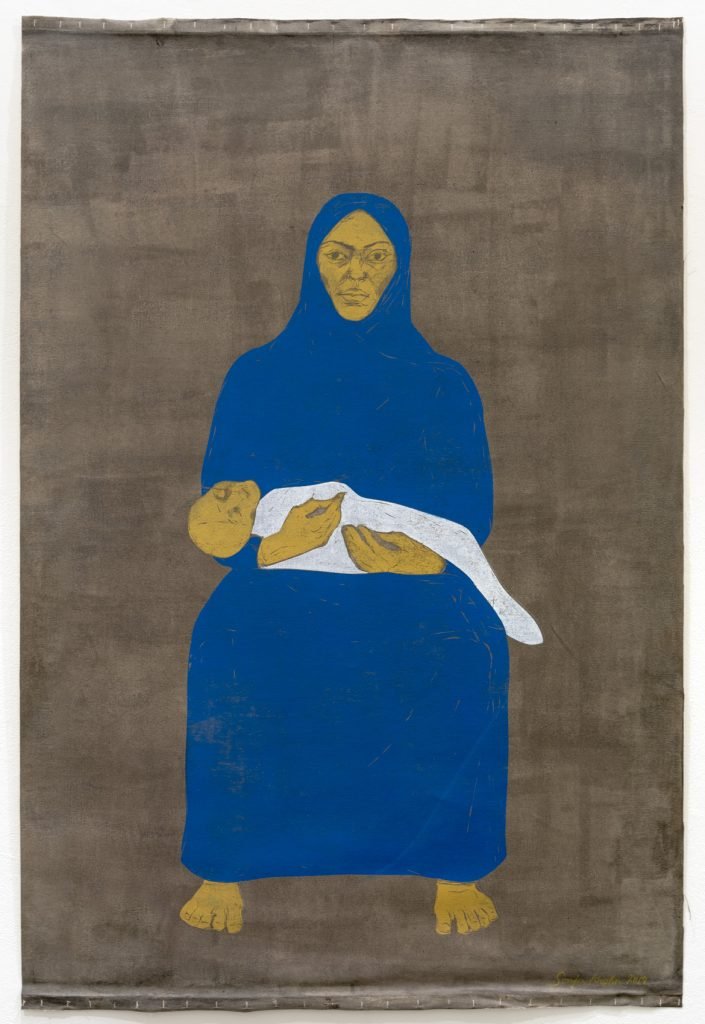There is a marked change in the air, and I think spring is finally coming to Svalbard! I can hear the water hitting the shore and smell the seaweed, my shoes are suddenly touching bare ground and I even hear birds chirping. It feels amazing, but at the same time Svalbard does not feel like such a distant exotic planet anymore. Maybe it also has a bit to do with the fact that I have now reached the halfway point in my residency, and the initial novelty is starting to wear off.
To enjoy the sun and warmer temperatures, our residency coordinator Lisa took us on a hike up to Platåberget just above Longyearbyen. Tarzan, our lovable but goofy husky companion, came along as polar bear guard. Unlike our previous hike up to Sarkofagen, we now enjoyed spectacular clear views and firmer snow, making this hike a lot less physically strenuous than the last. We also walked past Ninavarden, a cairn erected to commemorate a young girl from Oslo who was killed here by a polar bear in 1996. It serves as a stark reminder to always carry a rifle and remain alert, even if you are in the vicinity of the settlement.
With life being very much confined to Longyearbyen, I try to attend a lot of the cultural activities that are happening around town. Last week I saw the amazing stand-up show “Hold kjeft, det er Ibsen” by Liv Gundersen at Kulturhuset, which had made its way up here all the way from the National Theatre in Oslo. This week my residency colleague Ellen and I attended an after-work poetry workshop in the local library, as well as the vernissage of the exhibition “Tidslag” at Nordover Gallery. The exhibition, presenting a selection of photographs by Herta Lampert Grøndal, Leif Grøndal, their daughter Eva Grøndal and music by granddaughter Aggie Grøndal Peterson, seeks to give an overview of everyday life at Svalbard, tying together past and present on an island that has little to no collective continuous memory. These images also counteract the idea that Svalbard has always been strictly a male-dominated, company town settlement or a starting point for masculine dreams of polar exploration - it has also been a family-oriented society in which women and children have made a home for themselves. Sadly, many names and stories are lost, and many remain anonymous, because nobody stays here long enough to recall the past. Everyone is just a visitor passing through for a few months or years. I am very glad I got to attend the opening, and hear speeches from people who have formed close ties and roots with Svalbard - the Grøndals being one of the few families that have some sort of generational connection to this island.
While I have come to love Longyearbyen more than I ever thought I would, the first bouts of homesickness are starting to creep in. Maybe because I long for proper spring, and maybe because the friends I have made here left this week - most being fellow residency artists and writers whom I have become close to in a very short period of time. Together we have explored Svalbard and Longyearbyen, and shared and discussed the joys and tribulations of creating and producing. That is Svalbard for you - people come and go, and you constantly need to readjust. Just as the exhibition Tidslag conveys - the inhabitants of Longyearbyen are in a constant flux.
Luckily I have many exciting printmaking projects in the making, and with access to a beautiful print studio I know I will manage to keep myself happy and occupied for the remainder of my stay. I also have friends and family coming to visit from the mainland in May, which I am very much looking forward to. Finding highlights and setting daily goals is incredibly important - especially in an isolated place like Longyearbyen where I have so little physical freedom and space to roam on my own, and where my social network is a lot more fluid and temporary than at home. It is very much up to me to keep myself entertained and stimulated, and I find a lot of joy and meaning in my work. That being said, making art is not always pure unmitigated fun. Getting up and dragging yourself to the studio is not always easy - after all, work is work - even for artists. There is a lot of demotivating trial and error, a lot of mundane and physically strenuous preparatory steps, as well as the constant inner battle with the voice in your head putting a lot of pressure on you to perform and produce while you are on this once-in-a-lifetime sponsored residency. It can sometimes feel overwhelming, but what I do is break everything into small achievable tasks, and pick myself a few tasks to tackle each day. It may be something as trivial but necessary as “polish two copper plates” or “cover two copper plates with hard ground to let them dry overnight”. If I can just show up for myself to do those small assignments, I also feel that I gain momentum to commence on the next one on the list. And slowly, step by step, I can see a new print emerging.
The print I have been working on this week is yet another motif in which I have taken small illustrations from old maps of the North Sea, re-drawn them and placed them together in new constellations - this image focusing especially on the tempestuous nature of the seas and the great perils explorers put themselves in on their journey to explore the northernmost shores of the earth.
